Force and Pressure
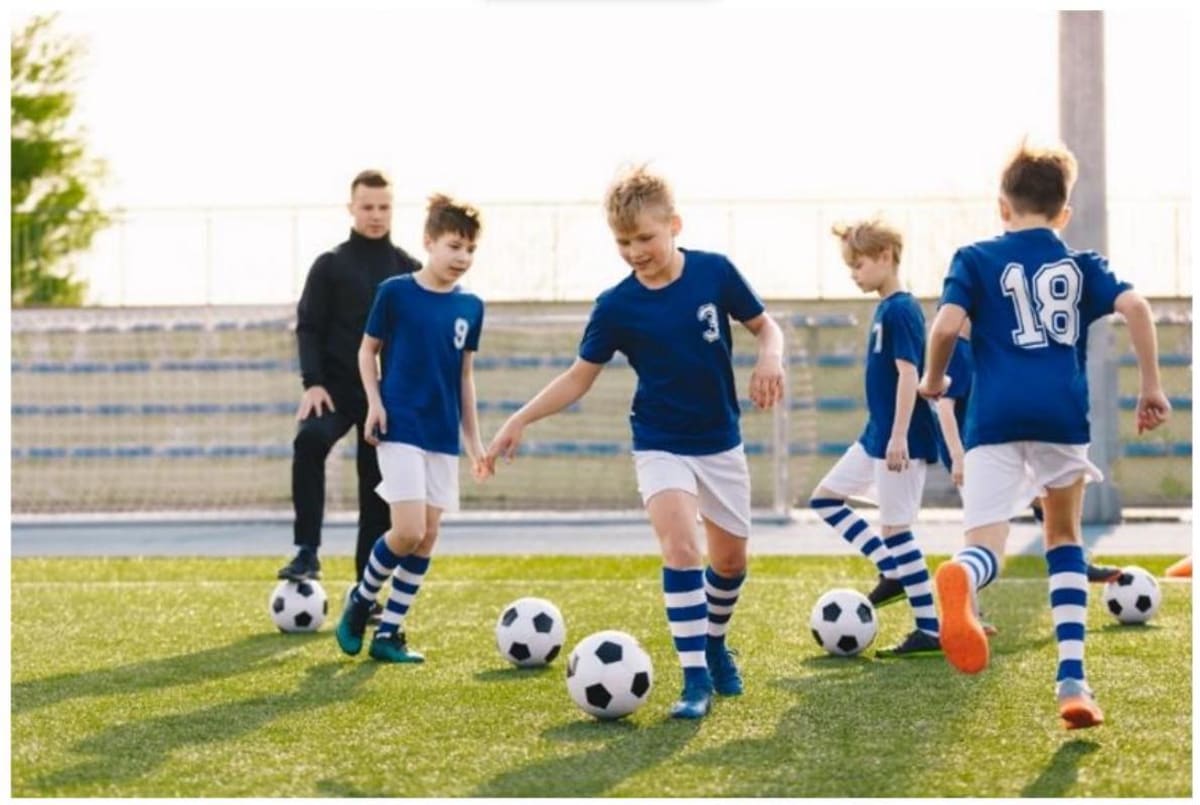
A football player kicks the ball with his foot, applying a force and directing the ball into a particular part of the ground. "Force is an action exerted on an object which may change the object's state of rest or motion."
1.0Introduction
The word 'force' is frequently used in our day to day life. A football resting on the ground, remains motionless, until you kick it. Your science book rests on the table until you pick it up. If you hold your book above the ground, then let it go, gravity pulls it to the floor. In each of these cases, the motion of the ball or book was changed by something pushing or pulling on it. Thus, an object will speed up, slow down, or turn only if someone is pushing or pulling on it.
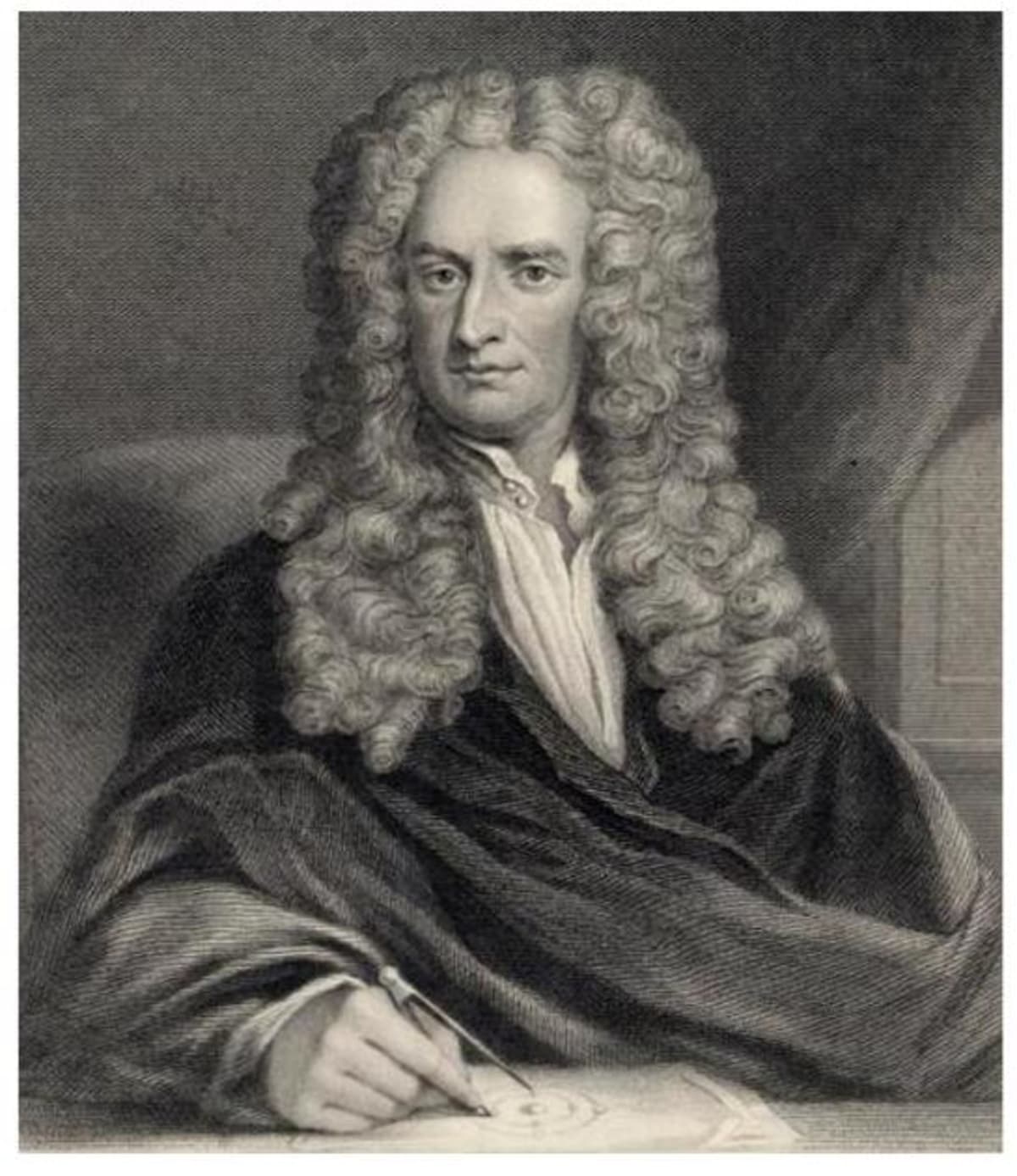
We always see or feel the effect of a force. If can only be explained by describing what happens when a force is applied to an object. Pushing, hitting and pulling of objects are some ways of bringing objects in motion. They move because we make a force act on them.
2.0Force
A push or a pull acting on some object is called a force. SI unit of force - Newton ; C.G.S. unit of force - Dyne 1 Newton = Dyne

Force - a push or a pull
3.0Forces are due to an interaction
Let us consider a man standing behind a stationary car. Now, if the man begins to push the car, that is, he applies a force on it, the car may begin to move in the direction of the applied force [see figure]. The man 'pushes' the car to make it move.
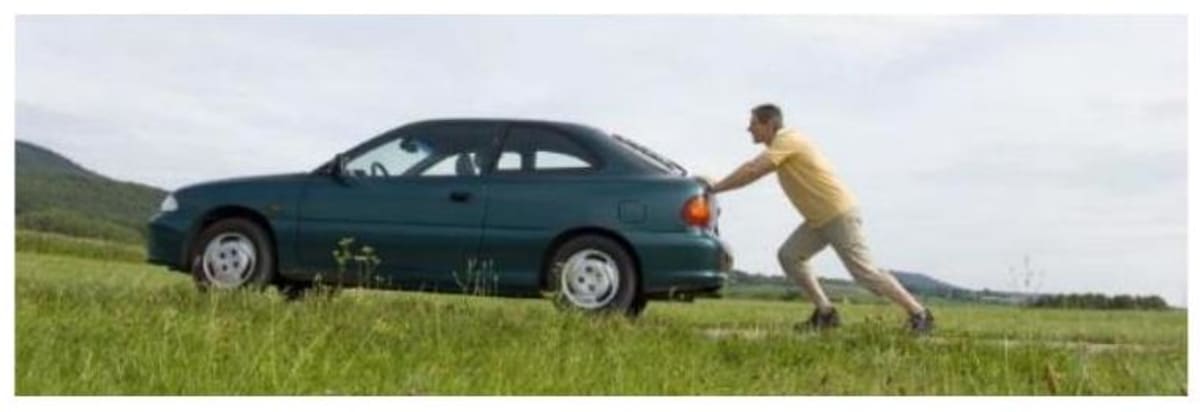
A car being pushed by a man From this example, we can conclude that at least two objects must interact for a force to come into play. Thus, an interaction of one object with another object results in a force between the two objects. Some other examples of interaction between two objects are given in figure (a) and figure (b).
Forces are always exerted by one object on another object i.e., to apply force atleast two objects are required.
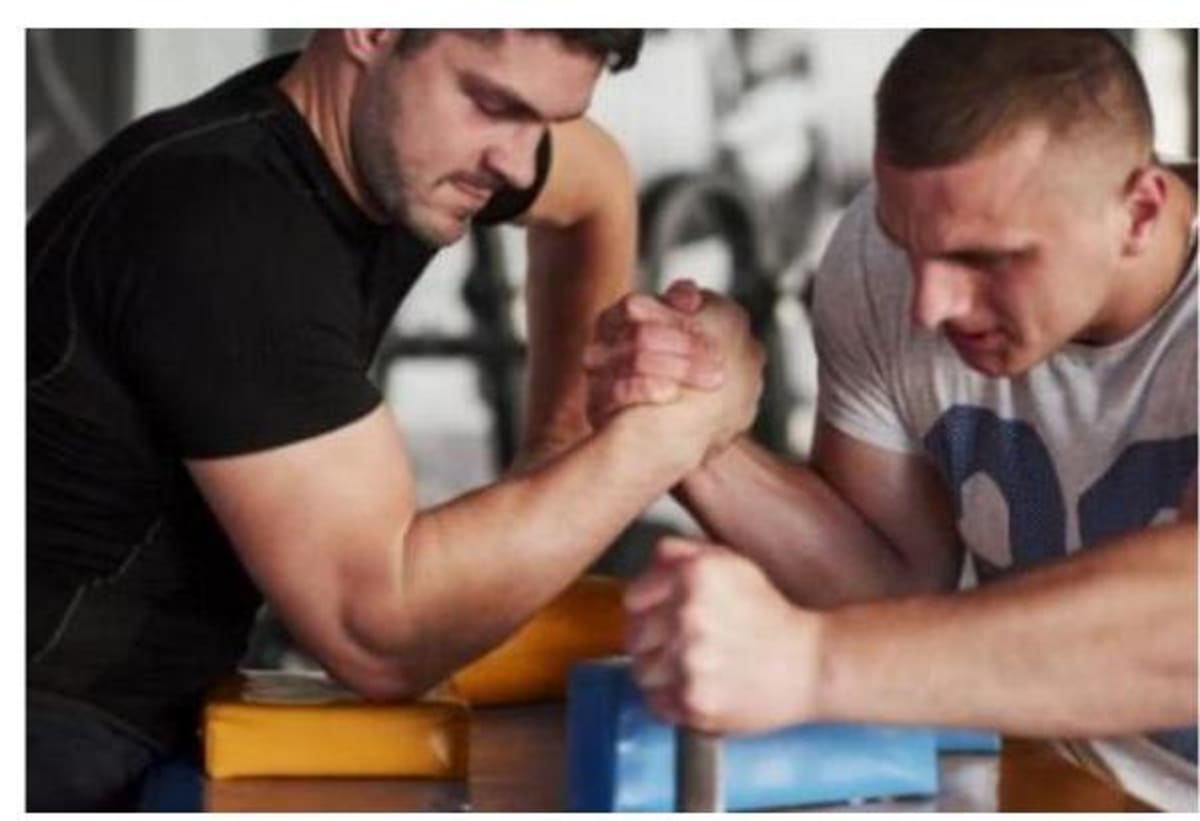

Interaction between two objects
4.0Exploring forces
In the game of 'tug-of war', two teams pull a rope in opposite directions (see figure). Members of both the teams try to pull a rope in their direction. Sometimes the rope simply does not move. The team that pulls harder, that is, applies a larger force, finally wins the game.
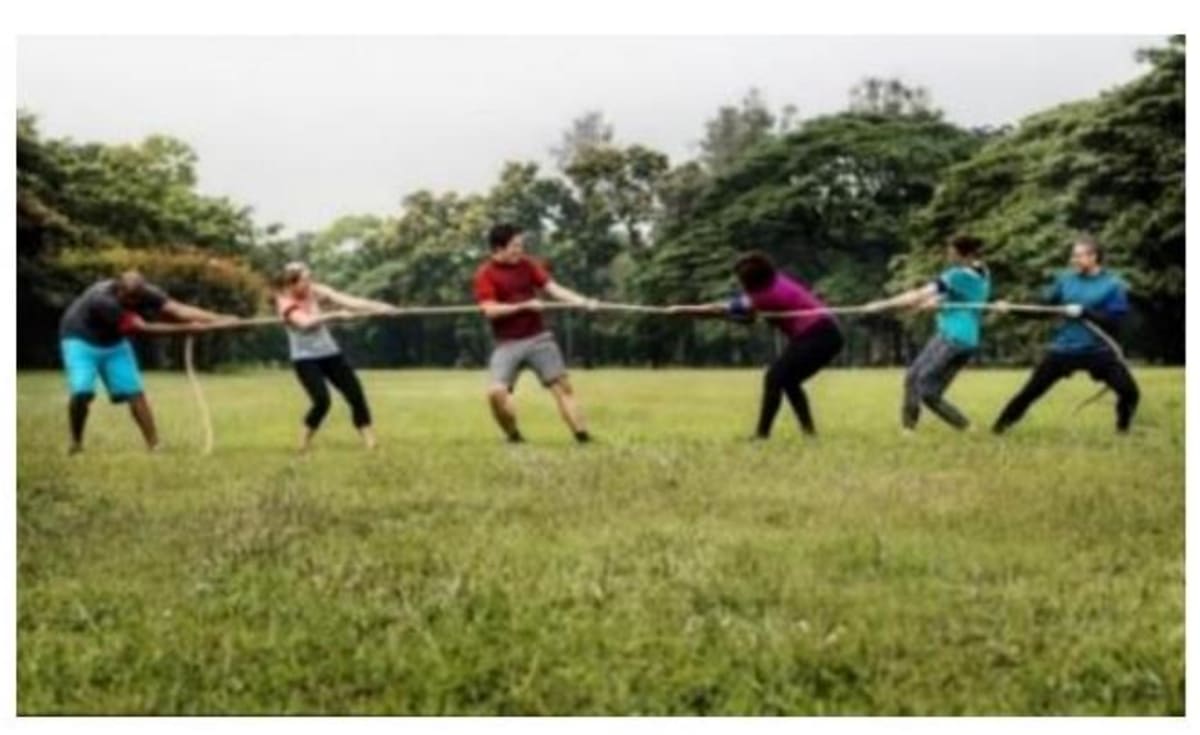
Tug of war : Rope will not move if the two teams pull with equal force
Quantities that have both magnitude and direction, are called 'vectors'. Quantities that are just numbers without any direction, are called 'scalars'. Since the effect of a force depends on both magnitude and direction, force is a vector quantity. A force vector points in the direction of the force, and its length is proportional to the magnitude of the force.
You are facing eastward, standing in front of a gate that can swing. In what direction is your force if you pull the gate or push the gate?
Since you are facing eastward, to pull on the gate you have to apply force in west direction i.e., westward. To push on the gate, you have to apply force in east direction i.e., eastward.
Unit of force should always be taken in MKS system.
- Arun pushes a box with a force of 50 N [see figure (a)]. The box moves slightly. He requests Varun to help him. Varun also pushes with a force of 50 N [see figure(b)]. The box now moves easily. Now, what is the net force acting on the box?
Solution: Decode the problem: Analyse the direction of forces. If forces are in same direction, add them. Since, the forces applied by Arun and Varun are in same directions, the net force acting on the box is equal to sum of forces applied by Arun and Varun. Net Force = force applied by Arun + force applied by Varun
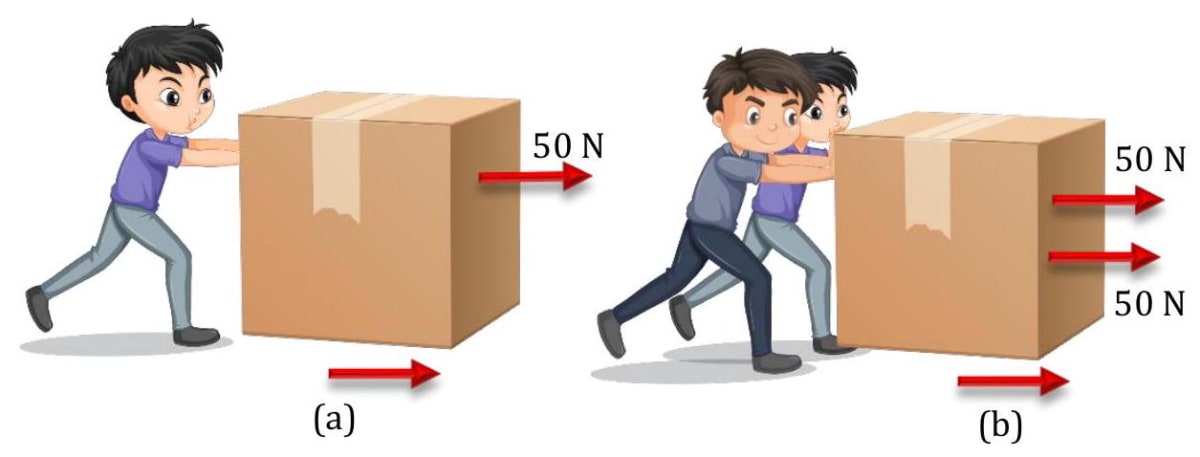
- (a) If Arun and Varun push the box from opposite ends with the same force [see figure (a)], what do you think will happen? What would be the net force?
(b) Suppose Arun pushed extra hard with a force of 60 N [see figure (b)]. What do you think will happen? What will be the net force?
(a)
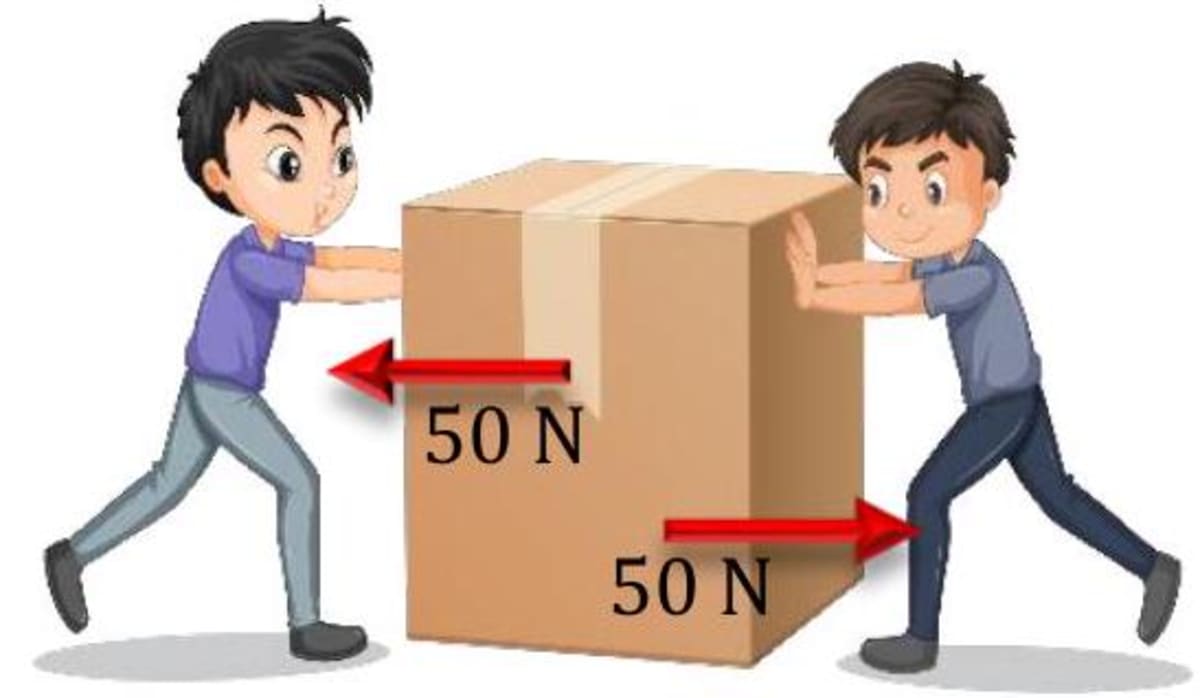 (b) Solution: Decode the problem Analyse the direction of forces. If forces are in opposite direction, subtract them. (a) The box will not move because the forces acting on it are equal in magnitude but opposite in direction. Since, the forces are in opposite directions, the net force will be the difference of the forces acting on the object. The net force on the box . (b) Again, in this case, the forces are in opposite directions. Thus, the net force on the box . The box will move but with some difficulty as the force acting on it is quite less.
(b) Solution: Decode the problem Analyse the direction of forces. If forces are in opposite direction, subtract them. (a) The box will not move because the forces acting on it are equal in magnitude but opposite in direction. Since, the forces are in opposite directions, the net force will be the difference of the forces acting on the object. The net force on the box . (b) Again, in this case, the forces are in opposite directions. Thus, the net force on the box . The box will move but with some difficulty as the force acting on it is quite less.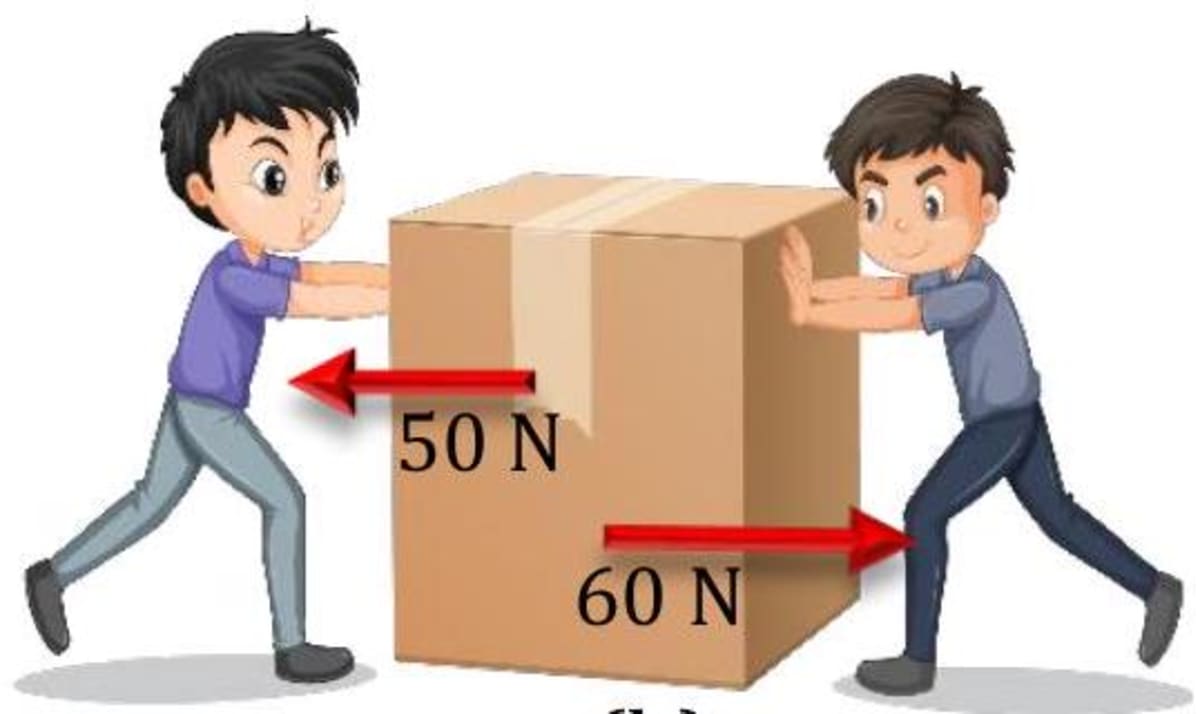
- In a tug-of war (see figure), the three members of team A pull with a force of 120 N , 100 N and 135 N . The three members of team B pull with a force of and 130 N. Which team will win?
Solution: Decode the problem Analyse the direction of forces. If fores are in opposite direction, subtract them. Total force applied by team Total force applied by team Net force on the rope Force applied by A - Force applied by B Since, the net force on the rope is zero, it will not go either way i.e., no team will win, its a tie !!
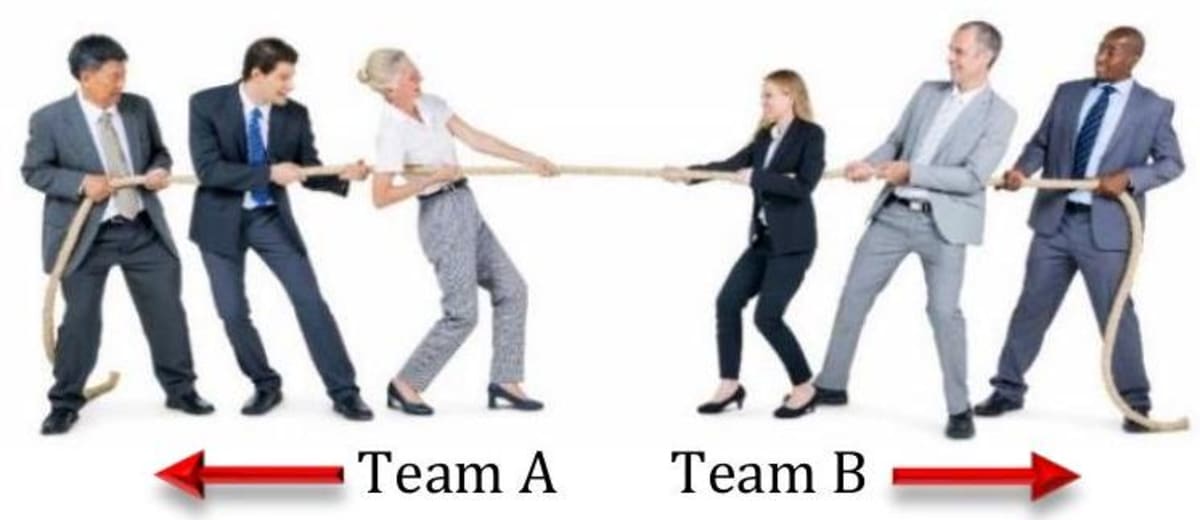
5.0Effects of force
Force can change the state of motion
A change in either the speed of an object, or its direction of motion, or both, is described as a change in its state of motion. A force can bring a change in the state of motion of an object.
Force can move a stationary object
A force can cause a stationary object to move, as when you throw a ball. Some examples of this are shown in figure (a) and figure (b).
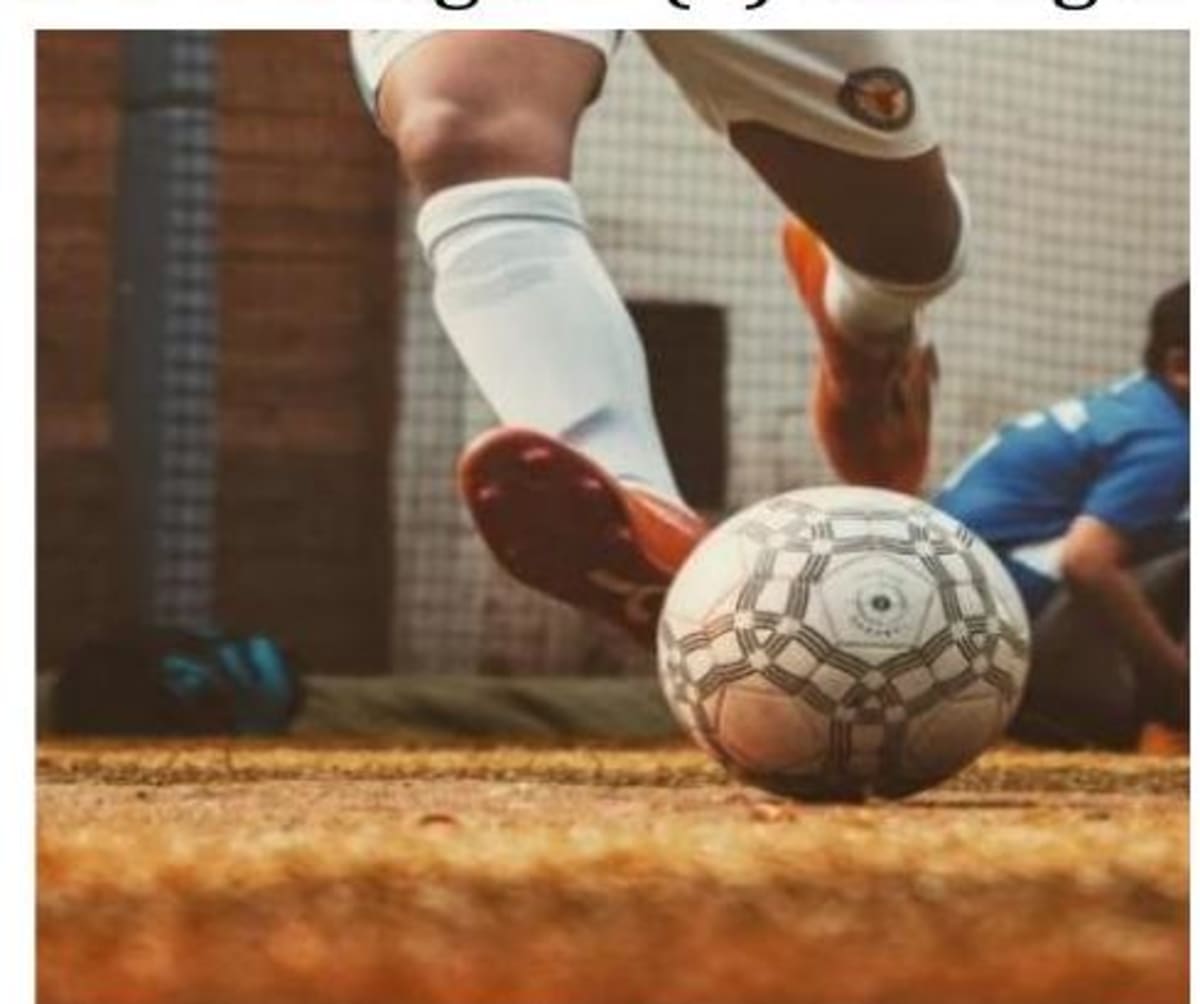
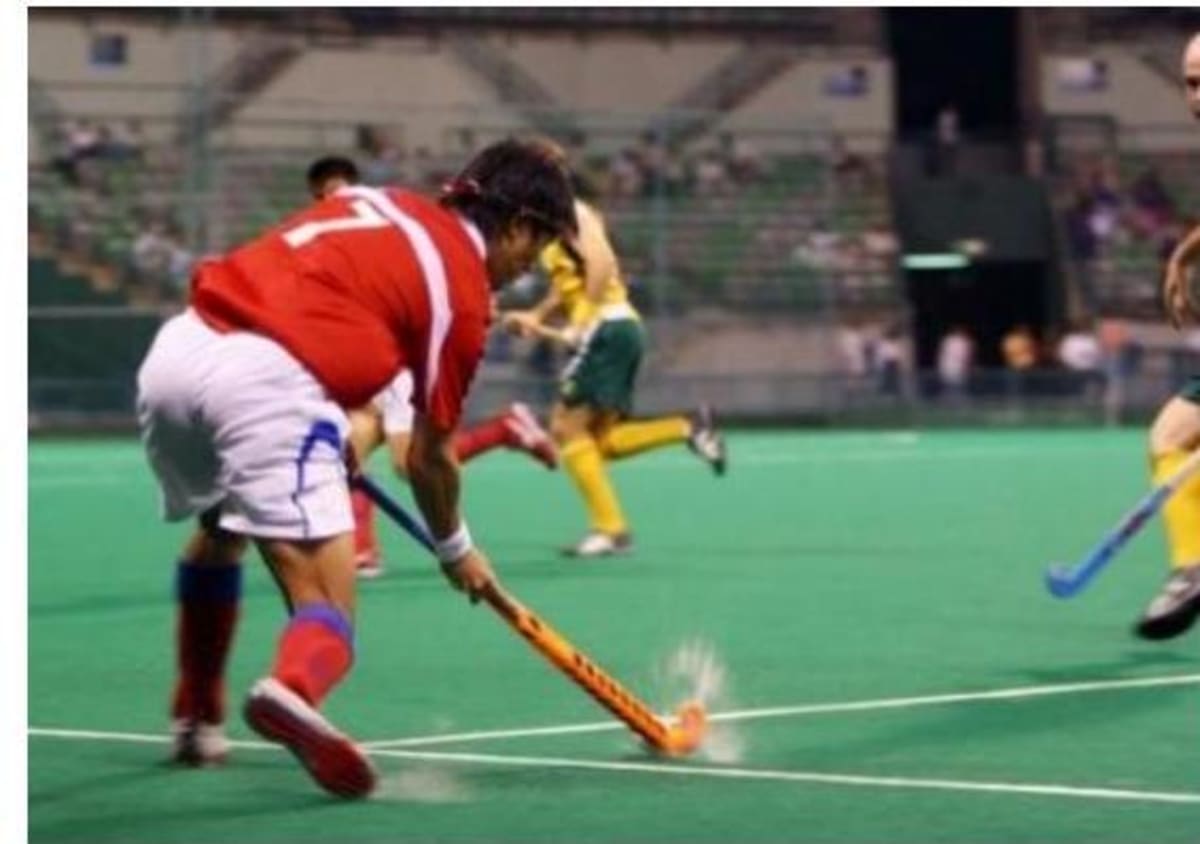
Force can stop a moving object
A force can cause a moving object to stop, as when you catch a ball. Some examples of this are shown in figure.

Force can increase or decrease the speed of a moving object
A force can cause a moving object to increase or decrease its speed. For example, when you kick a moving football in the direction of its motion, its speed increases. When you apply a gentle brake in your bicycle, its speed decreases as the applied force is opposite to the motion of the cycle. Some examples of this are shown in figure.

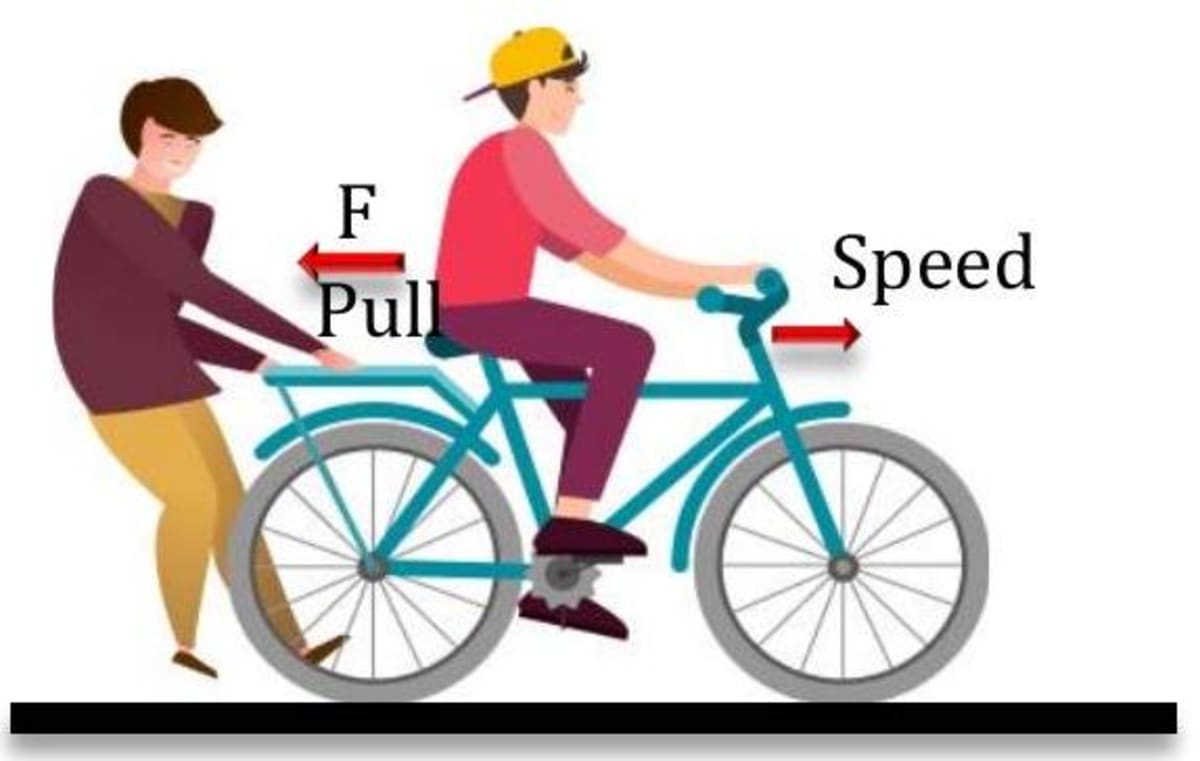
Changing the speed of an object by applying force on it.
Force can change the direction of a moving object
A force can cause a moving object to change its direction. For example, in the game of cricket, a batsman applies a force to change the direction of the ball coming towards him. Some examples of this are shown in figure.
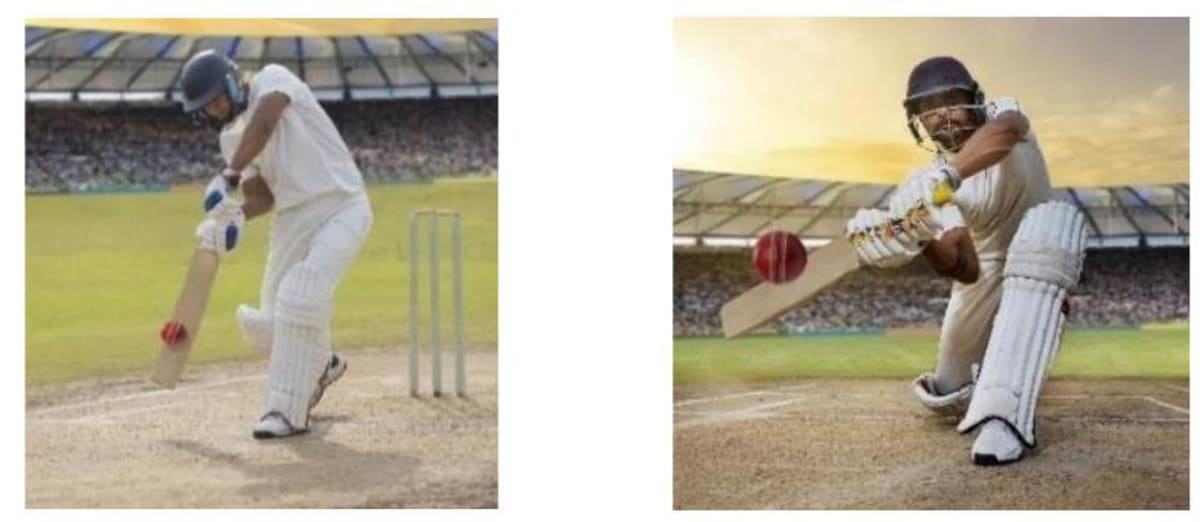
A batsman changing the direction of the ball using his bat
Force can make an object to rotate
If an object (like a fan), is free to rotate about an axis, a force applied on it can cause its rotation. For example, force of wind causes a windmill to rotate [see figure (a)] ; a person driving a car rotates the steering through the force applied by his hands [see figure (b)].
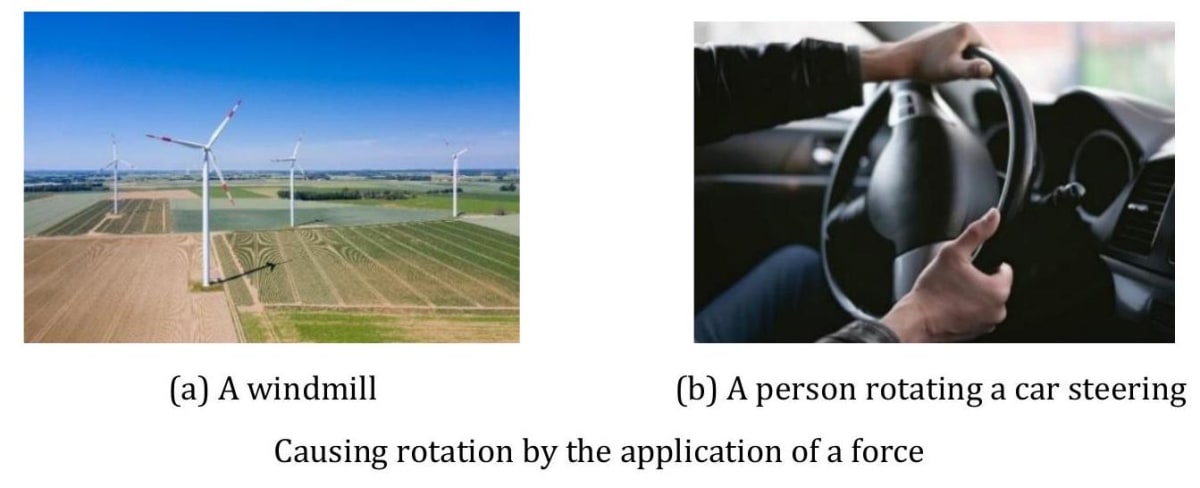
- Whenever the net force applied on an object is in the direction of its motion, the speed of the object increases.
- Both are applying forces which are equal in magnitude but opposite in direction. So, the net force on the table is zero.
- Velocity and force are in opposite directions, that is why the ball comes to rest (or stopped).
Force can change the shape of an object
A force may bring about a change in the shape of an object. For example, stretching or compressing a spring changes its shape, pressing a rubber ball changes its shape. An example of this is shown in figure.
Force can change the shape of an object:


6.0Types of forces
7.0Contact forces
When you press the keys on a computer keyboard, your fingers exert a force on the keys. This force can be exerted only when your fingers are touching the keys.
- A force that is exerted only when two objects are touching is called contact force. A contact force can be small, such as the force you exert to push a pencil across a sheet of paper, or large, such as the force exerted by a traffic crane as it pulls a car along a street. Some examples of contact forces are shown in figure.
(a) A karate fight
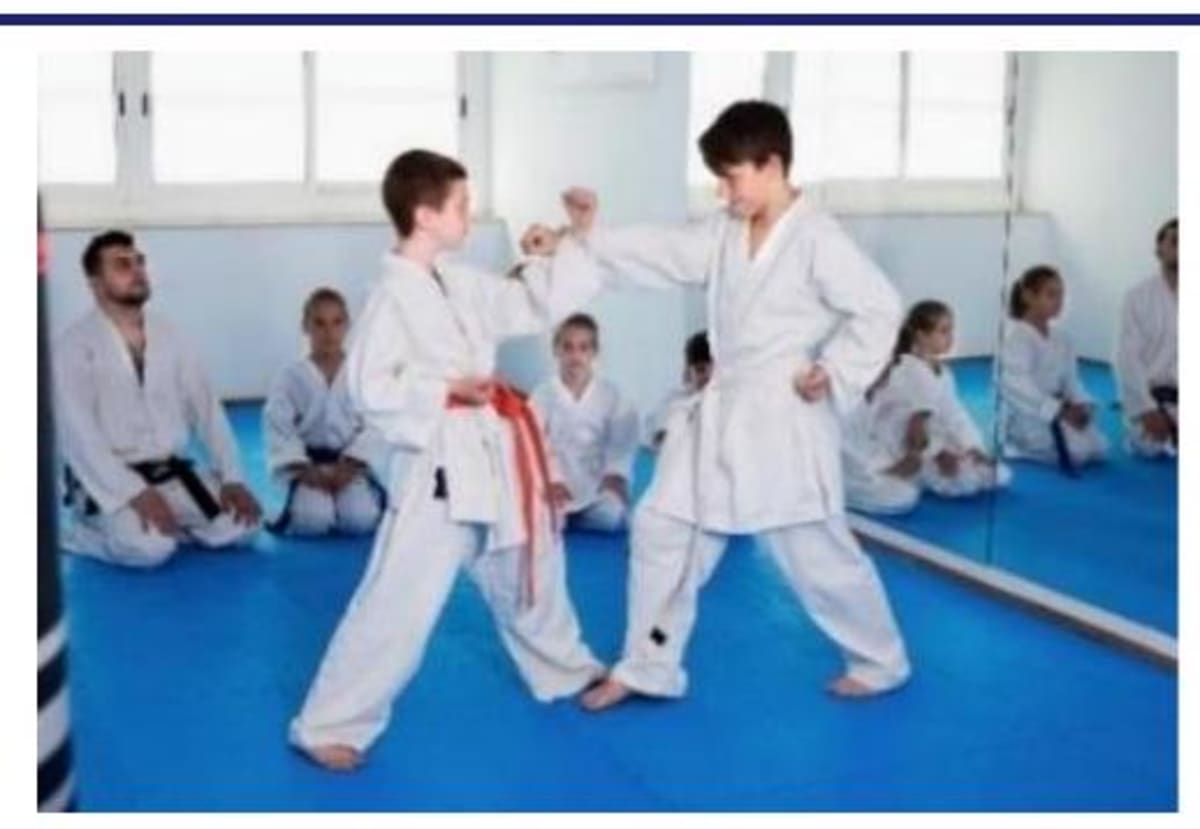
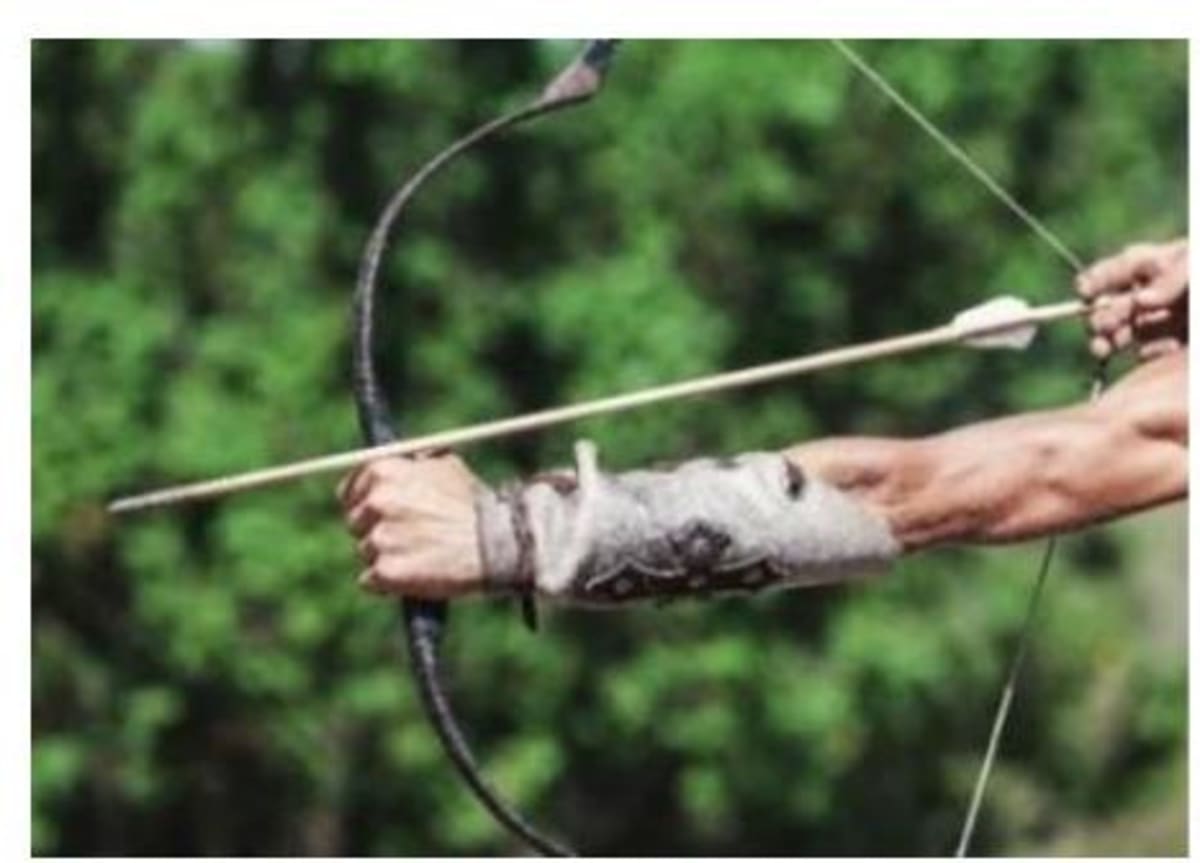
Examples of contact forces
Muscular force
When you push an object like a school bag or lift a bucket of water, the force comes from the action of muscles in your body. (see figure)

Example of muscular forces
The force resulting due to the action of muscles is known as the muscular force. Animals also make use of muscular force to carry out their physical activities and other tasks. Animals like bullocks, horses, donkeys and camels are used to perform various tasks for us. In performing these tasks they use muscular force.
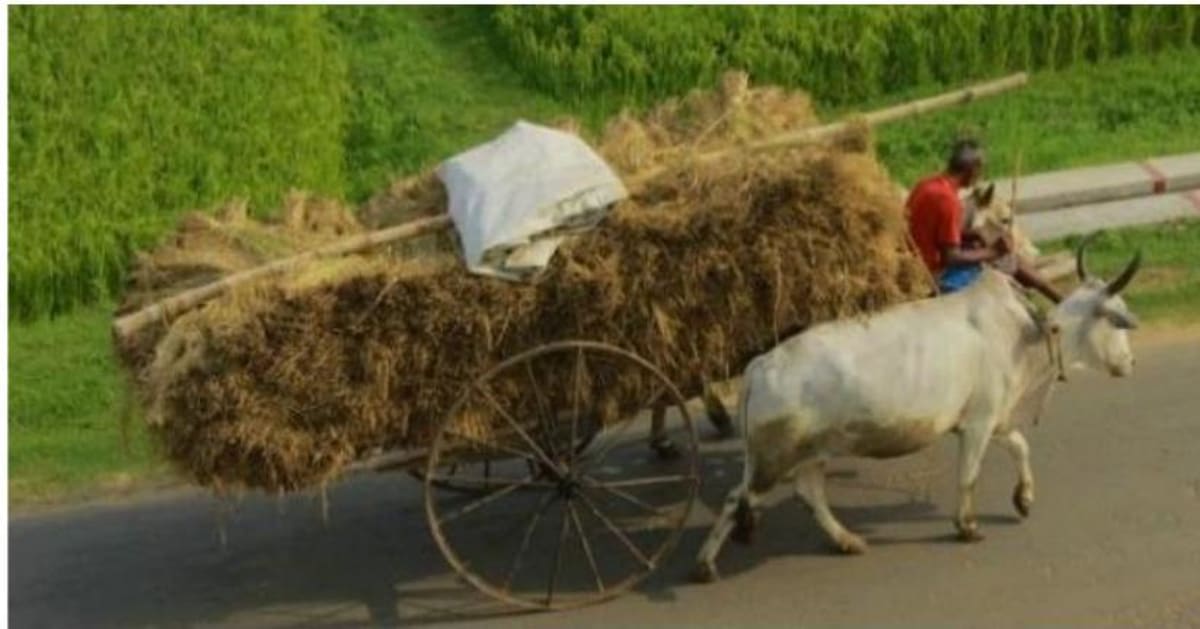
Friction
You must have seen that a ball rolling along the ground gradually slows down and finally comes to rest. When you stop pedaling a bicycle, it gradually slows down and finally comes to stop. A car or a scooter also comes to rest once its engine is switched off. Similarly, a boat comes to rest if you stop rowing it. In all the above situations no force appears to be acting on the objects, yet their speed gradually decreases and they come to rest after some time. Since, there is a change in their state of motion, some force must be acting on them. This force which is responsible for changing the state of motion of objects in all the above examples is the force of friction. Friction is a force that resists motion. Friction is found everywhere in our world. You feel the effects of friction when you swim, ride in a car, walk, and even when you sit on a chair. Friction can act when an object is moving or when it is at rest. Figure shows some common examples of friction.
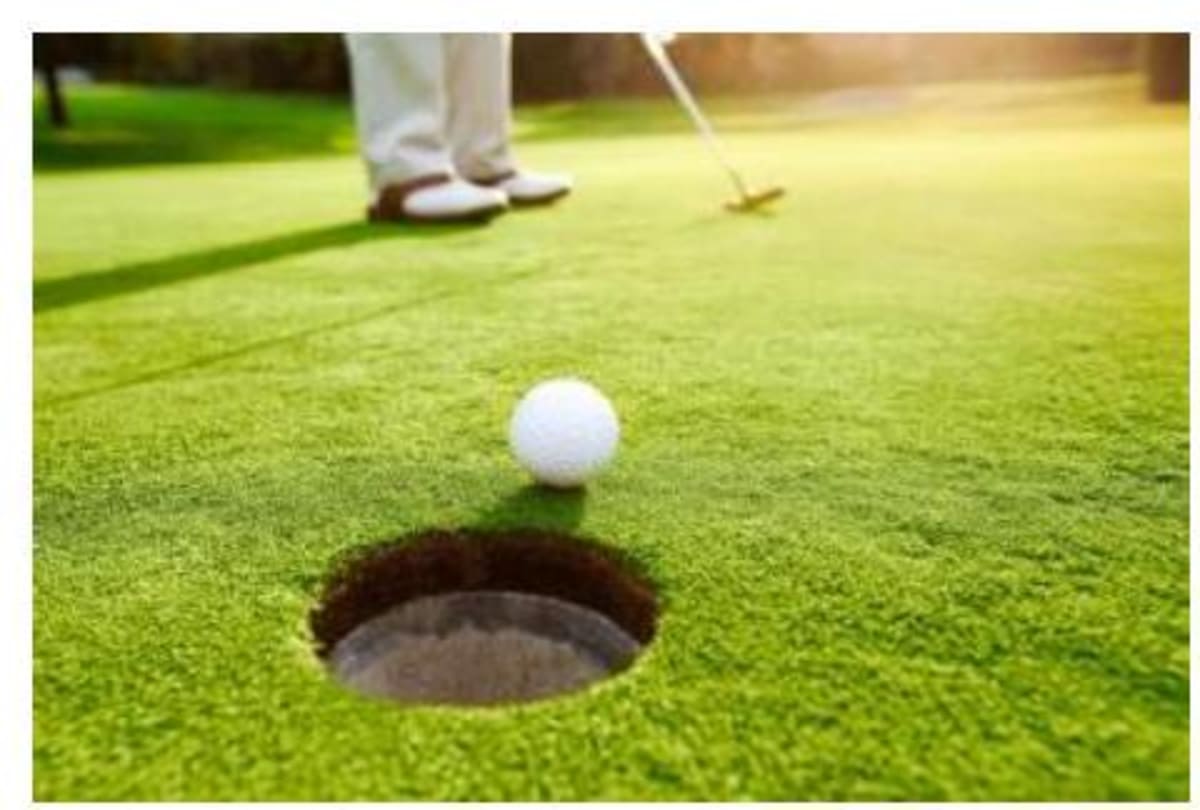
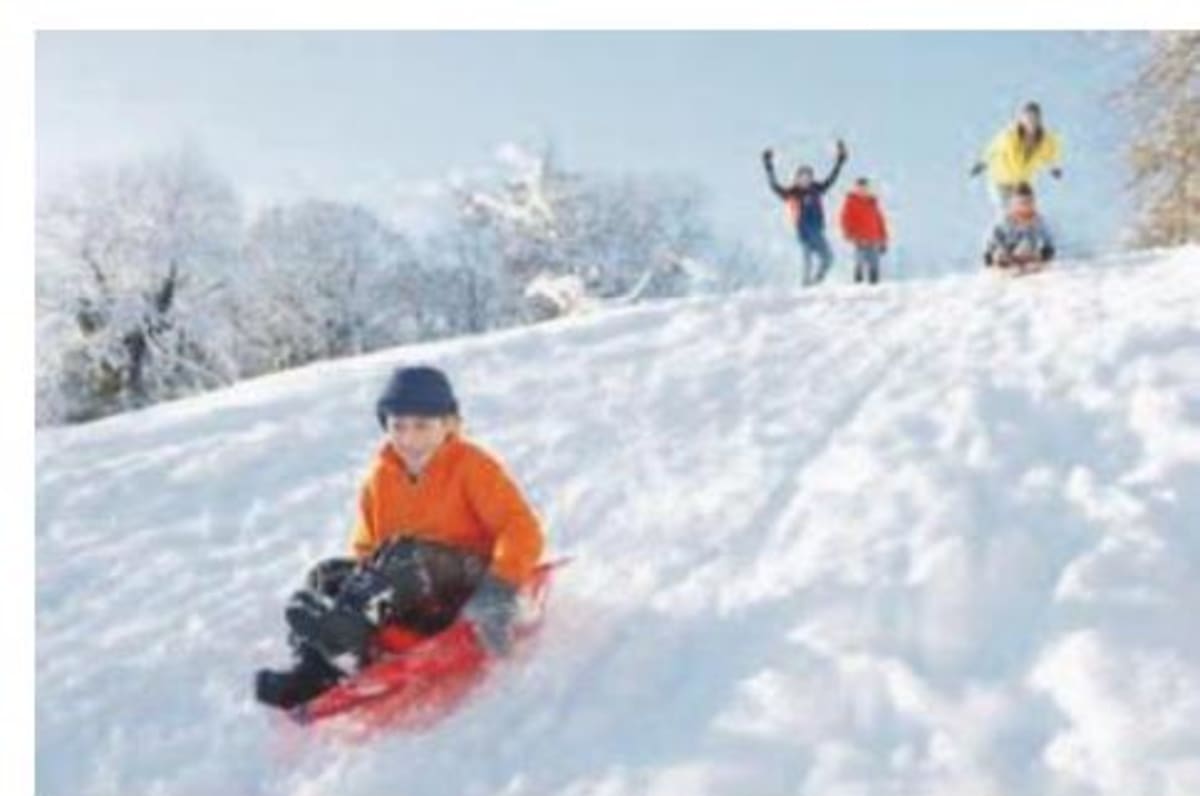
Effects of frictional force
Suppose you are rowing a boat in water. What happens when you stop rowing?
Once you stop rowing, friction between water and the boat brings it to a stop in some time. The force of friction always acts on all the moving objects and its direction is always opposite to the direction of motion.
Tension
Tension is a force exerted by string, ropes, fibers, and cables when they are pulled. A spider web consists of numerous fine strands that pull on one another (see figure). We say that the strands are under tension. Thus, tension keeps the spider web together.

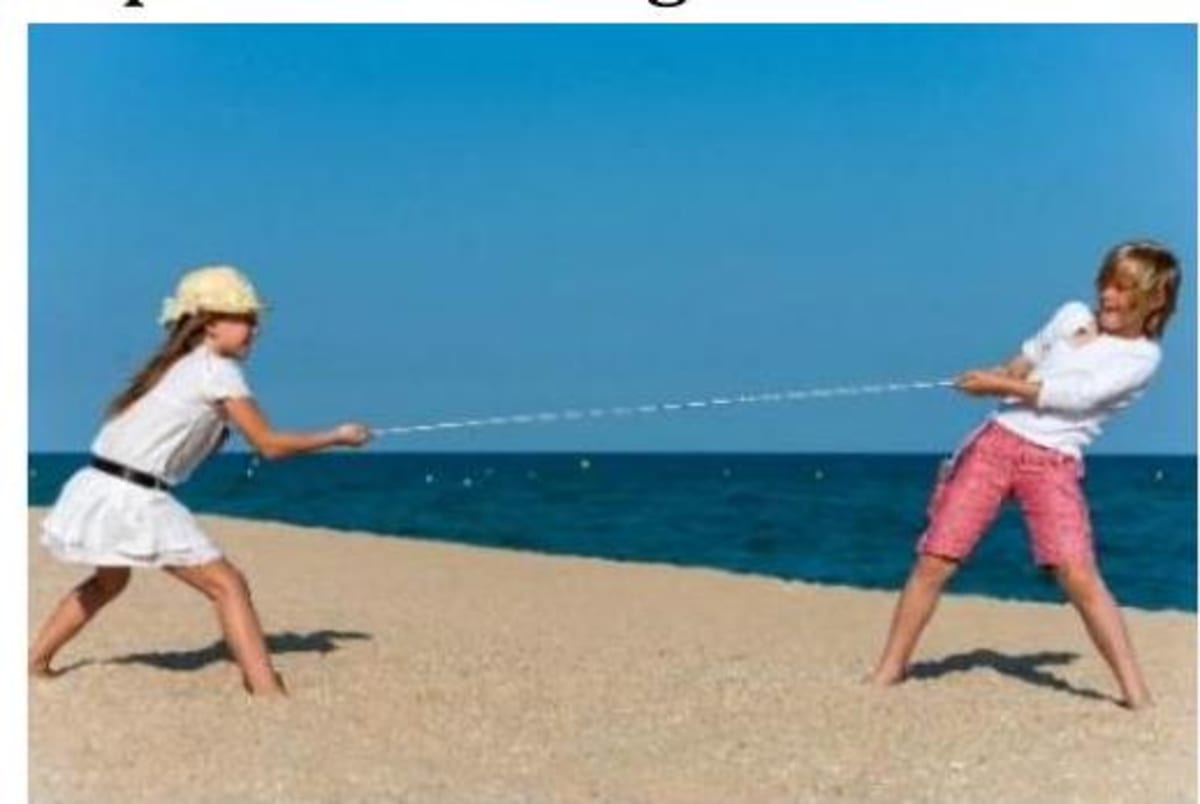
8.0Non contact forces
When you jump up in the air, you are pulled back to the ground, even though nothing seems to be touching you. Forces can be exerted by one object on another even though they aren't touching each other. The force pulling you down to Earth is the gravitational force exerted by Earth. This force is a noncontact force. A non contact force is a force that one object exerts on another when they are not touching. Non contact forces include the gravitational force, the electric force, and the magnetic force.
Magnetic force
The force exerted by a magnet on a piece of iron or on another magnet is called magnetic force. Like (or similar) poles repel while unlike (or opposite) poles attract (see figure).

Force between two magnets
Electrostatic force
The electrons in an atom move around the nucleus. What keeps these electrons close to the nucleus? The positively charged protons in the nucleus exert an attractive force on the negatively charged electrons. All charged objects exert a force on each other. This force is called electrostatic force or electric force. The force exerted by a charged body on another charged body or uncharged body is known as electrostatic force. The electrostatic force between two charges can be attractive or repulsive (see figure). Objects with the same type of charge repel one another and objects with opposite charges attract one another i.e., 'like charges repel and unlike charges attract'.

You know that a coin or a pen falls to the ground when it slips off your hand. Is there any force acting on them? Explain.
When the coin is held in your hand it is at rest. As soon as it is released, it begins to move downwards. It is clear that the state of motion of the coin undergoes a change. This is not possible without a force acting on it. Yes, there is a force acting on them, 'the force of gravity'.
Gravitational force
The leaves or fruits fall to the ground when they get detached from the plant. The skydiver (see figure) is also being pulled downward, even though there seems to be nothing touching him. Have you ever wondered why is it so? Objects fall towards the Earth because it pulls them. This force is called the gravitational force or force of gravity, or just gravity.

9.0Pressure
What happens when you walk on soft snow or dry sand? Your feet sink into the snow or sand and walking can be difficult. If you ride a bicycle with narrow tires over these surfaces, the tires will sink even deeper than your feet. How deep you sink depends on your weight as well as the area over which you make contact with the sand or snow. For example, when you stand on snow with your normal shoes, you may sink deep into the soft snow [see figure (a)]. However, if you use special kinds of supports (or snow boards) having larger area than your shoes [see figure (b)], you can stand on the snow very easily.

In both cases, your weight exerts a downward force on the snow. What changed was the area of contact between you and the snow. By changing the area of contact, you changed the 'pressure' you exerted on the snow due to your weight. When you stood with supports (or snow boards), the area of contact increased, so that the same force was applied over a larger area. As a result, the pressure that was exerted on the snow decreased and you didn't sink as deep.
Pressure is the force per unit area that is applied on the surface of an object Pressure
Unit of pressure - Since pressure is force per unit area thus, unit of pressure is Newton per square meter and in short it is called 'pascal' i.e.,
SI unit of pressure - Pascal ; C.G.S unit of pressure - dyne .
1 Pascal = 1 Newton or
- Take all the units in same system either in MKS or CGS system.
- We know,
Therefore, .
- Area is always in square units.
- Area of circle or 3.14
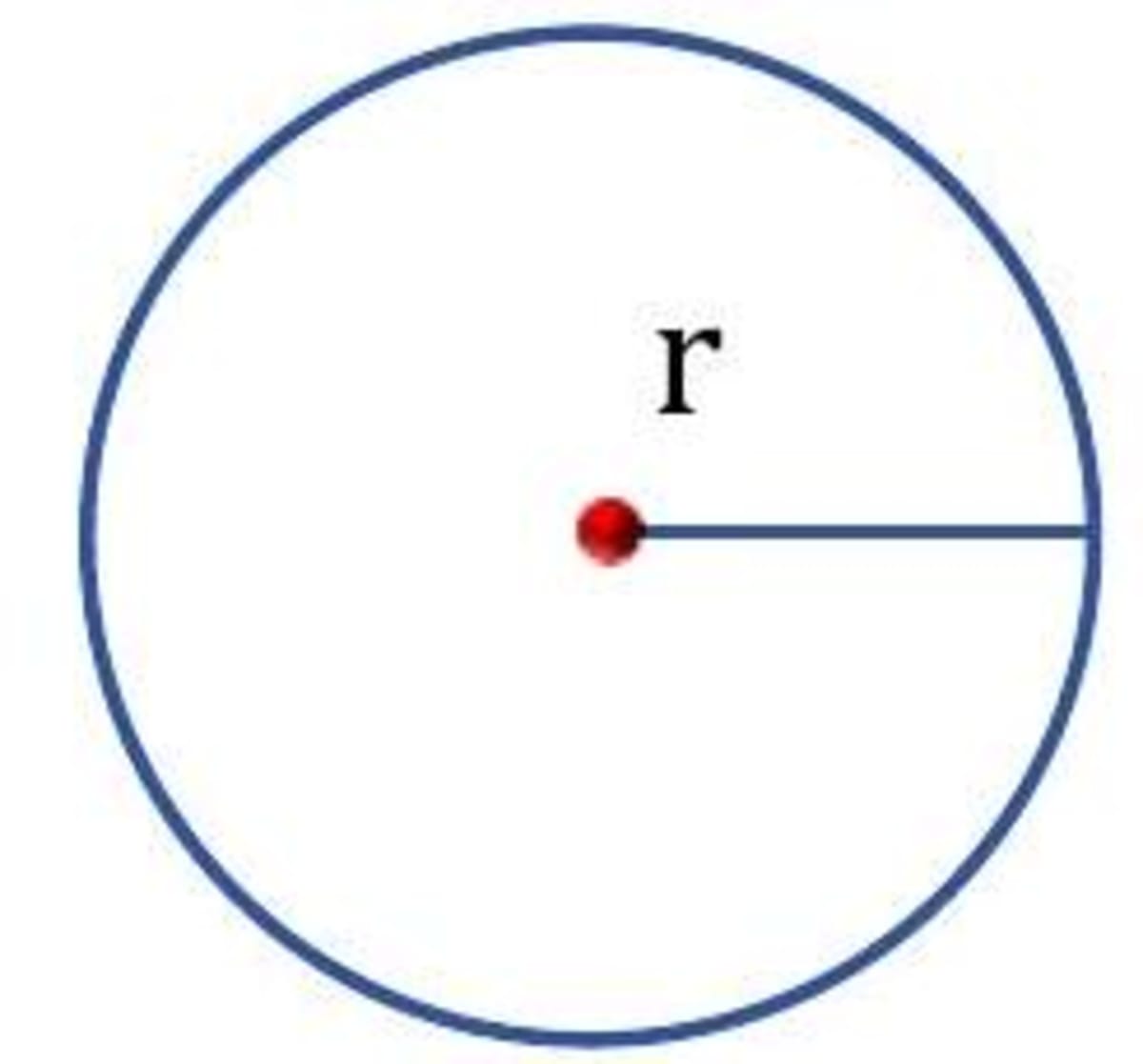
- Area of rectangle
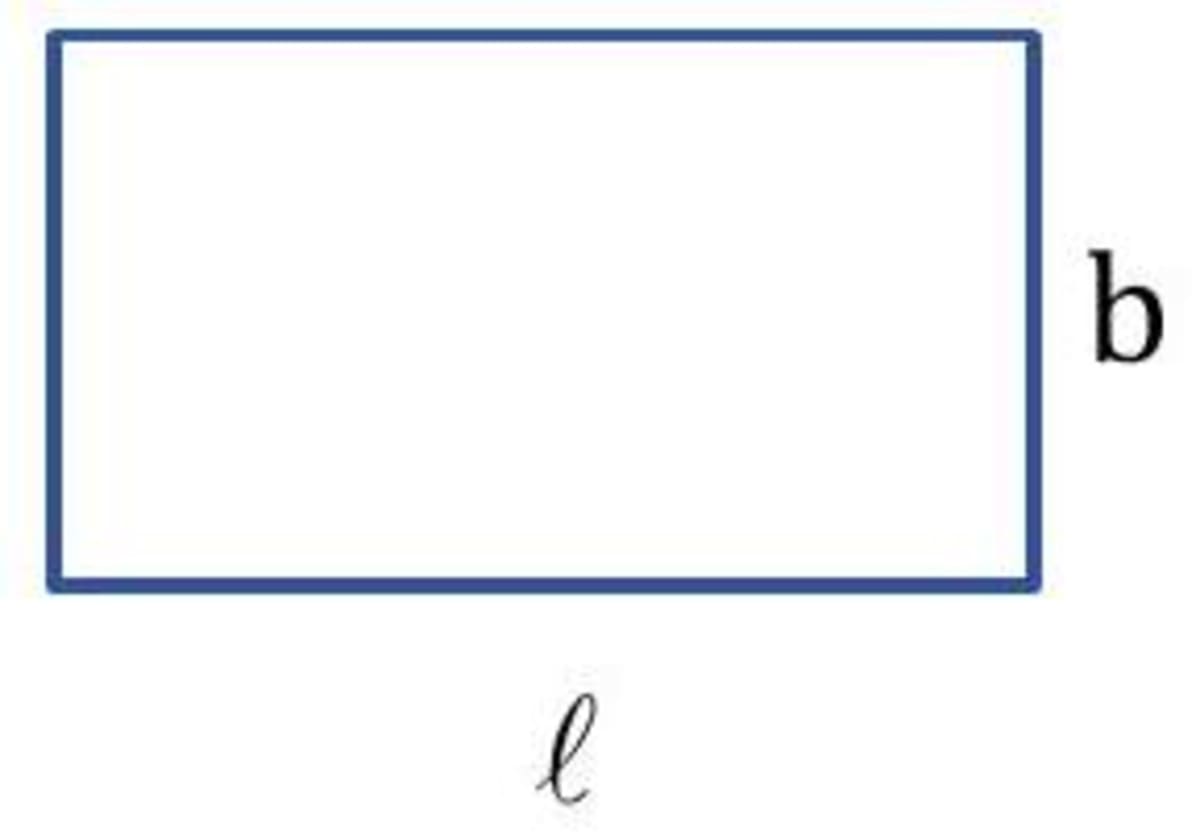
- Area of square side side
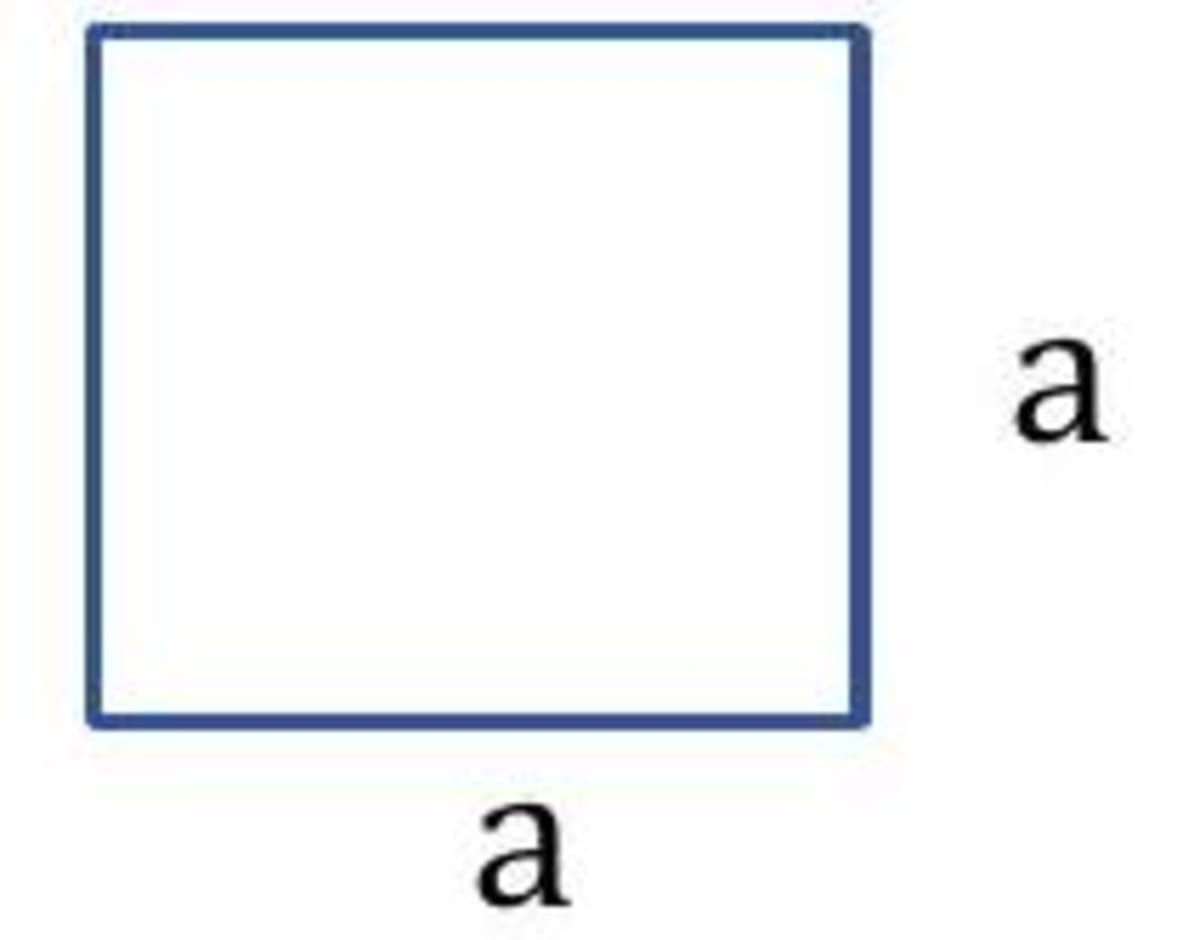
When you push a nail using a hammer into a wooden plank by its head, the nail cannot be inserted in the plank. When you push the nail by the pointed end, the nail can easily be inserted in the plank. Why?
When you apply a force on the nail using a hammer with its head touching the wooden plank, the pressure exerted on the plank is quite small. This is because pressure is inversely proportional to area i.e., the larger the area, smaller the pressure on a surface for the same force. When you apply the same force on the nail with its pointed end touching the plank, pressure exerted on the plank is sufficient to insert it into the plank (see figure). This is because the area of the pointed end of the nail is much smaller than that of its head.
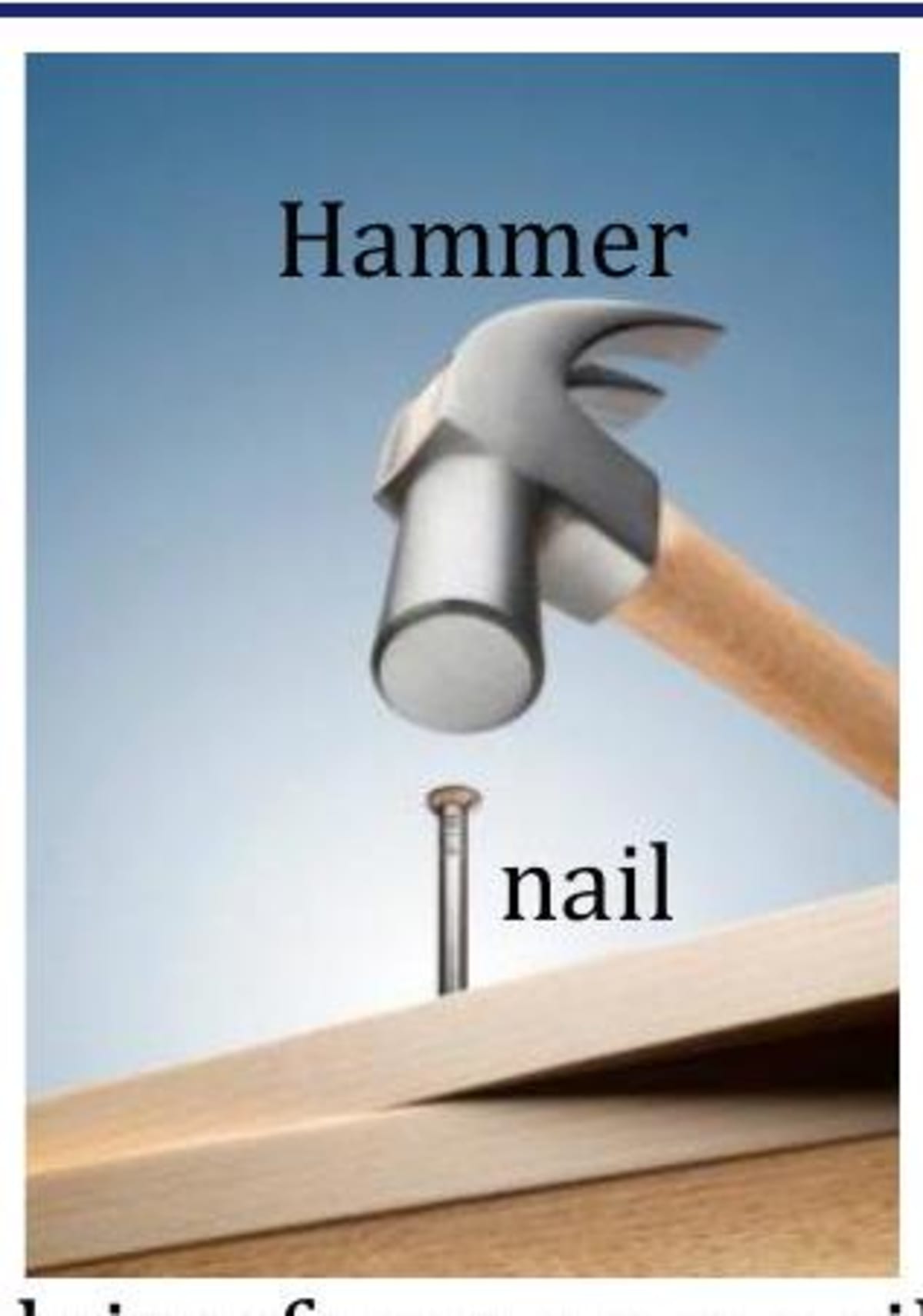
- Strong winds during a storm or a cyclone can blow away even the rooftops. The winds and cyclones are caused by the difference in air pressure.
Some common examples related to pressure
(1) If you try to cut vegetables with a blunt knife, you will not succeed. But, if you use a sharp knife, it is quite easy to cut the vegetables. This is because the area of sharp edge of the knife is quite small and thus, pressure is large enough to cut the vegetables.
(2) The straps of shoulder bags are made wide (broad). This is because the wide straps has larger area so that the pressure exerted on the shoulder becomes quite small. Thus, it becomes quite comfortable to carry such shoulder bags.
(3) Porters place on their heads a round piece of cloth, when they have to carry heavy loads (see figure). By this they increase the area of contact of the load with their head. So, the pressure on their head is reduced and they find it easier to carry the load.
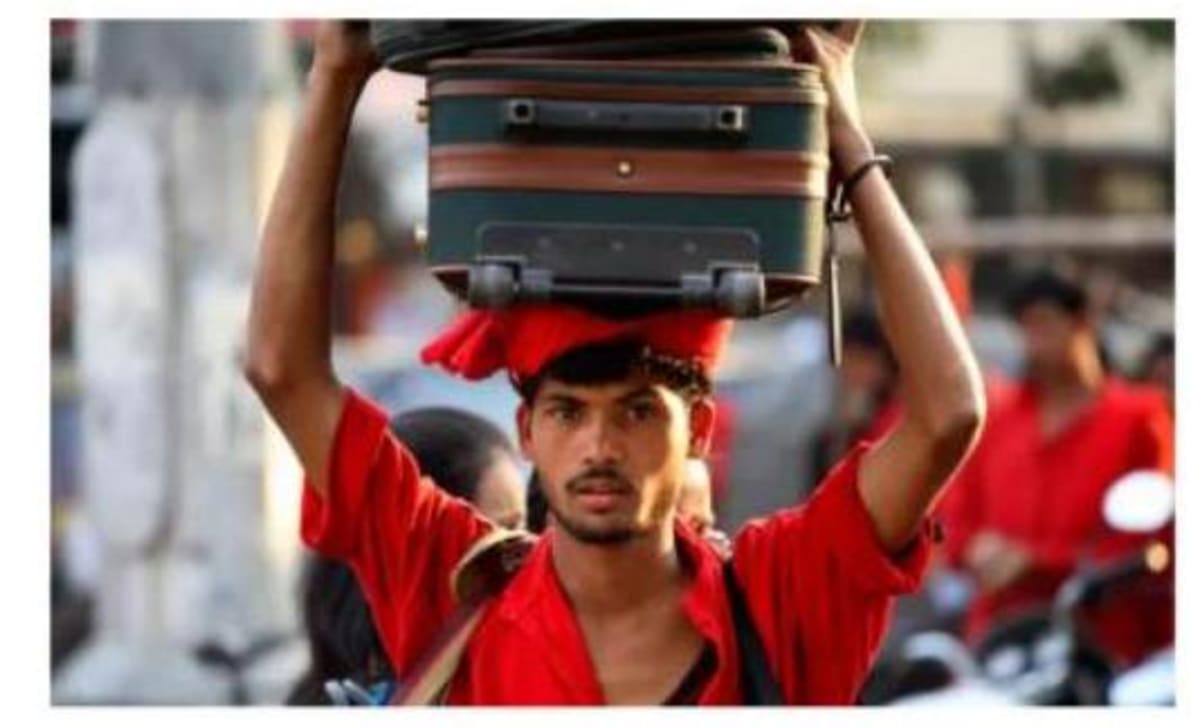
A porter carrying a heavy load
Pressure exerted by liquids (hydrostatic pressure) and gases
Liquids and gases are fluids, which are materials that can flow and have no definite shape. Like solid objects, fluids can exert pressure (or forces). Fluid pressure is measured in pascal and also in mm of Hg .
It is true for any liquid that 'the pressure depends only on the height of the column of fluid above the surface where you measure the pressure'. It does not depends on the area of the surface in contact or the shape of the liquid column (see figure on next page). The greater the height of the column of fluid above a surface, the greater is the pressure exerted by the fluid on the surface.
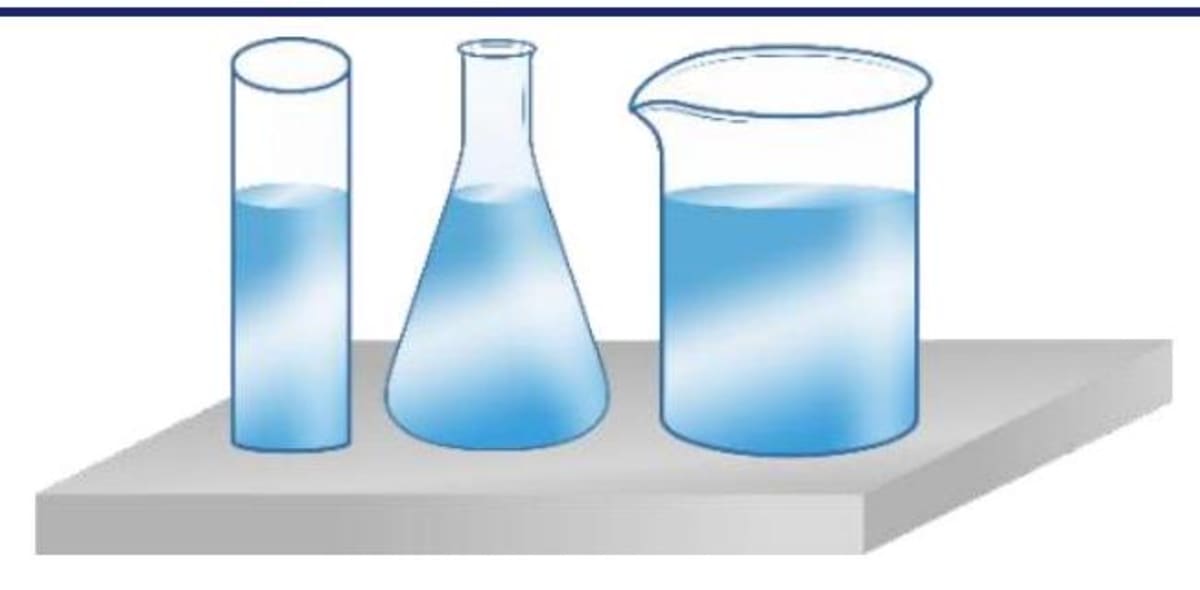
Pressure depends only on the height of the fluid above a surface, not on the shape of the vessel. Pressure at the bottom of each section of the vessel is same.
Pressure and depth
Figure shows how pressure changes with depth. At the top of the glass filled with water, the water pressure is zero because there is no column of water above that level. Pressure in the middle of the glass depends on the column of water from the top of the glass to the middle of the glass. Pressure at the bottom depends on the entire height of the water. Pressure increases with depth because the column of water pushing down becomes taller and heavier.

The pressure exerted by a fluid increases as the depth in the fluid increases.
Pressure acts in all directions
Figure shows that the fluid exerts pressure on each face of the cube or from all sides of a submarine, not just on their tops. This pressure is perpendicular to the surface, and the amount of pressure depends only on the depth in the fluid.
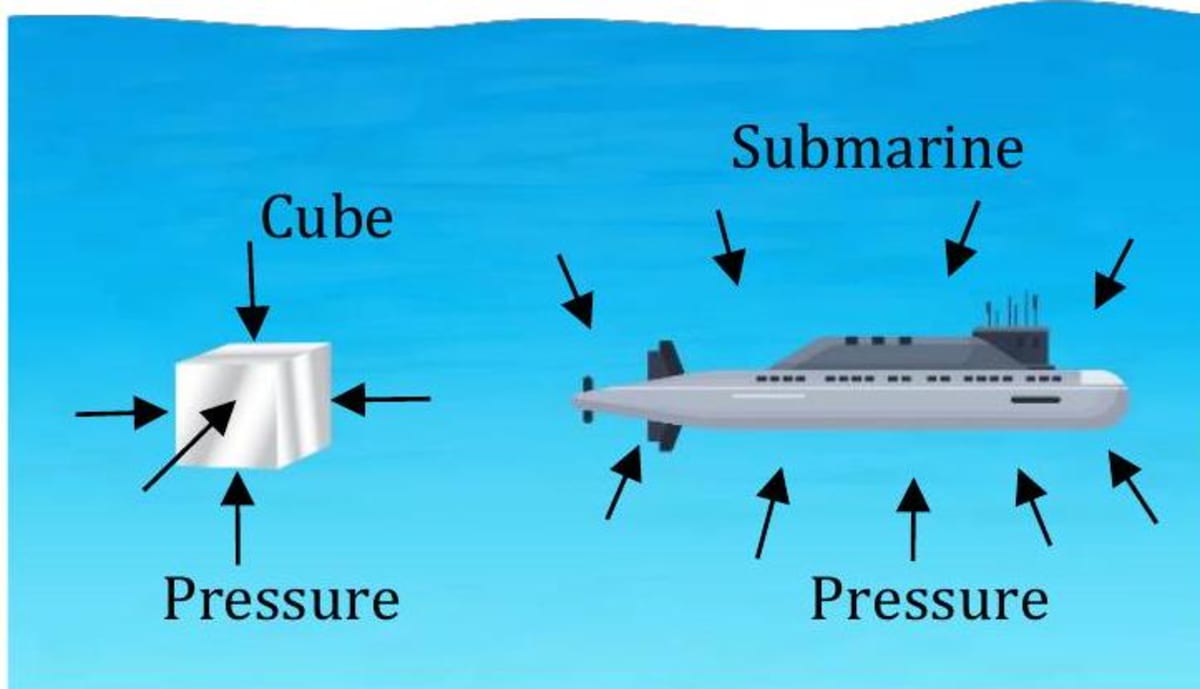
The pressure on all objects in a fluid is exerted on all sides, perpendicular to the surface of the object, no matter what is its shape.
Similar to liquids, gases also exert pressure on the walls of their containers. A force applied to a fluid (liquid or gas) creates pressure. Pressure acts in all directions, not just the direction of the applied force. When you inflate a car tyre, you are increasing the pressure in the tyre. This force acts up, down, and sideways, in all directions inside the tyre.
10.0Atmospheric pressure
Though you don't feel it, you are surrounded by a fluid that exerts pressure on you constantly. That fluid is air or atmosphere surrounding the Earth. The envelop of air surrounding the Earth is known as the atmosphere. The atmosphere at Earth's surface is only about times as dense as water. But, the atmospheric air extends up to many kilometres above the surface of the earth which is large enough to exert a large pressure on the objects at Earth's surface.
The pressure exerted by the air present in the atmosphere is known as atmospheric pressure. Atmospheric pressure on our body is a result of the weight of the atmosphere exerting force on our body. Atmospheric pressure is approximately at sea level.
A manometer is used to measure pressure. A barometer is used to measure the atmospheric pressure. Suppose the area of your head is which is equal to .

Therefore, the weight (force) of air on your head is 100,000 Pressure on your head . This means weight (force) of air in a column of the height of the atmosphere and area 10 (see figure) is as large as 1000 N .
The force pushing down on your body due to atmospheric pressure is as large as the weight of a luxury car. Then, why doesn't this pressure cause you to be crushed? Explanation
Your body is filled with fluids such as blood that also exert pressure. The pressure exerted outward by the fluids inside your body is equal to the atmospheric pressure. This pressure inside your body cancels the pressure exerted from outside by the atmosphere. Thus, you are not crushed under this large force due to the atmospheric pressure.
You don't feel the atmospheric pressure because there is an equal, internal pressure pushing out from the inside of your body. This internal pressure balances the external pressure exerted on you by the atmosphere.
What happens to the atmospheric pressure if you go at higher altitudes or walk up on a mountain?
If you start at the base of a mountain and walk up, the height of the column of air above you decreases. This means, with increasing elevation, the amount of air above you decreases, and thus, the atmospheric pressure also decreases. As you go higher in the atmosphere, atmospheric pressure decreases.
11.0Concept Map
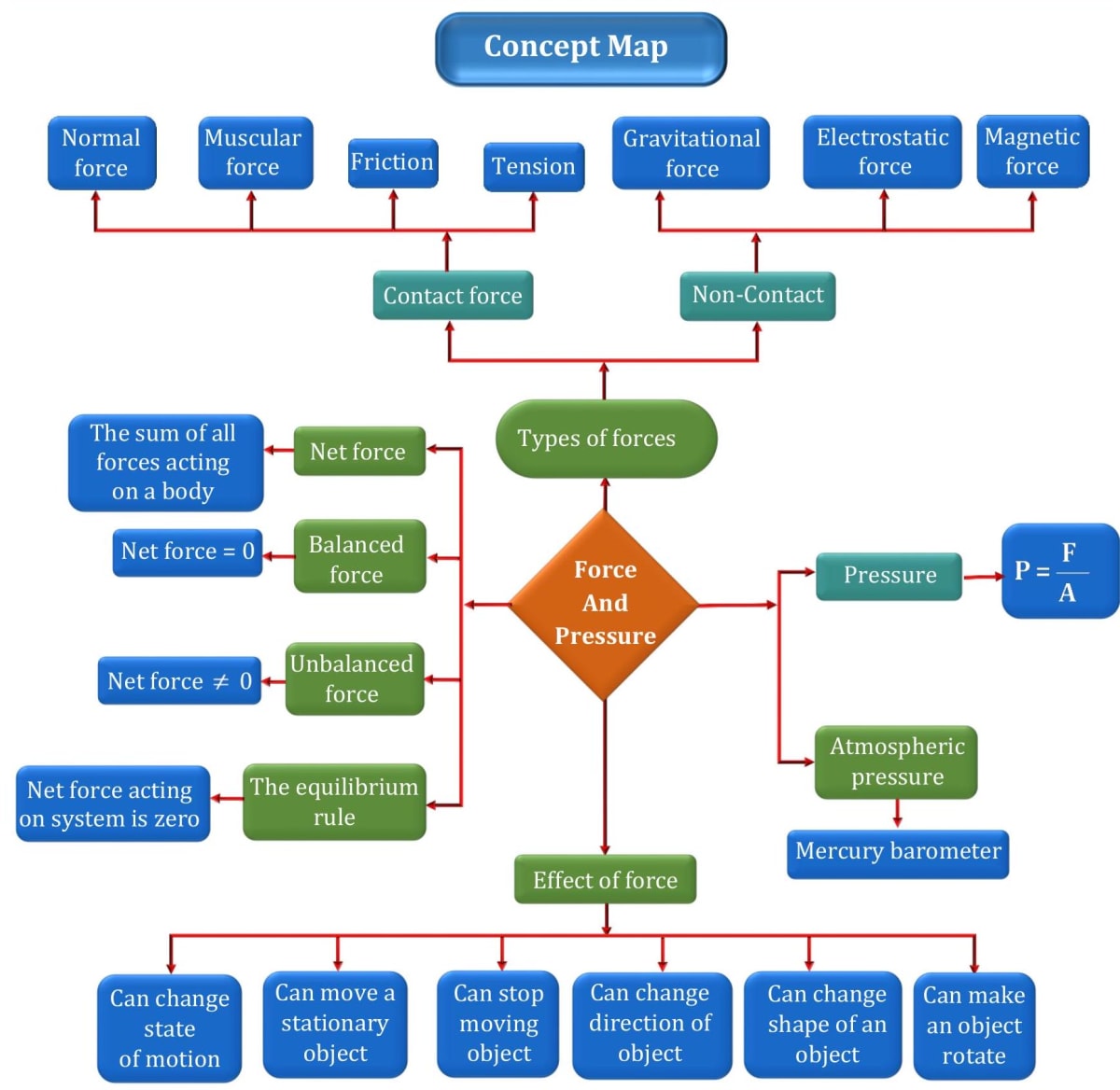
12.0Some Basic Terms
- Frequently - Often, Regularly
- Interaction - When two or more objects have an effect up on one another.
- Tug-of war - A game in which two teams pull and opposite and of a rope until one drag the other.
- Magnitude - It is a number that characterize the size of something.
- Scalar - Quantities which have only magnitude.
- Vector - Quantities which have both magnitude and direction.
- Axis - A line we imagine through the middle of an object around which the object turns.
- Compressing - To make something fill less space than usual.
- Gradually - Little by little.
- Resists - Try to stop something from doing something.
- Plank - A long flat piece of wood.
- Directly proportional - Related so that one becomes larger or smaller when the other becomes larger or smaller.
- Inversely proportional - Two quantity behave opposite in nature. One becomes larger when other becomes smaller.
- Fluid - A substance that can flow.
13.0SOLVED EXAMPLES
Numerical Ability
- A force of acts over a surface having an area of . What is the pressure on this surface? Solution: Decode the problem To find the pressure, we should know the formula pressure Given, force ; area ; pressure ? We know that, pressure
- A pressure of acts on an area of . Calculate the total force acting on the given area. Solution: Decode the problem Identify the formula pressure Given, pressure ; area ; force ?
- A force of 800 N exerts a pressure of . What area is it acting on? Solution: Decode the problem Identify the formula pressure Area Given, pressure ; force ; area ? or Area
- A person weighs 600 N . He is wearing shoes with a total area of . What pressure do they exert on the floor? Solution: Decode the problem Identify the formula pressure Given, force ; area ; pressure ? pressure
- Find the net force on the object due to forces acting on the object according to diagram shown
Solution: Force 10 N and 20 N act in same direction on the object and 5 N acts in the opposite direction. Net force acting on box .

- A block of weight 5 N is placed on a horizontal table. A person pushes the block from top by exerting a downward force of 3 N on it. Find the force exerted by block on the table.
Solution:
The block exerts a downward force equal to its weight of the block and a pushing force of 3 N downward.
in downward direction.
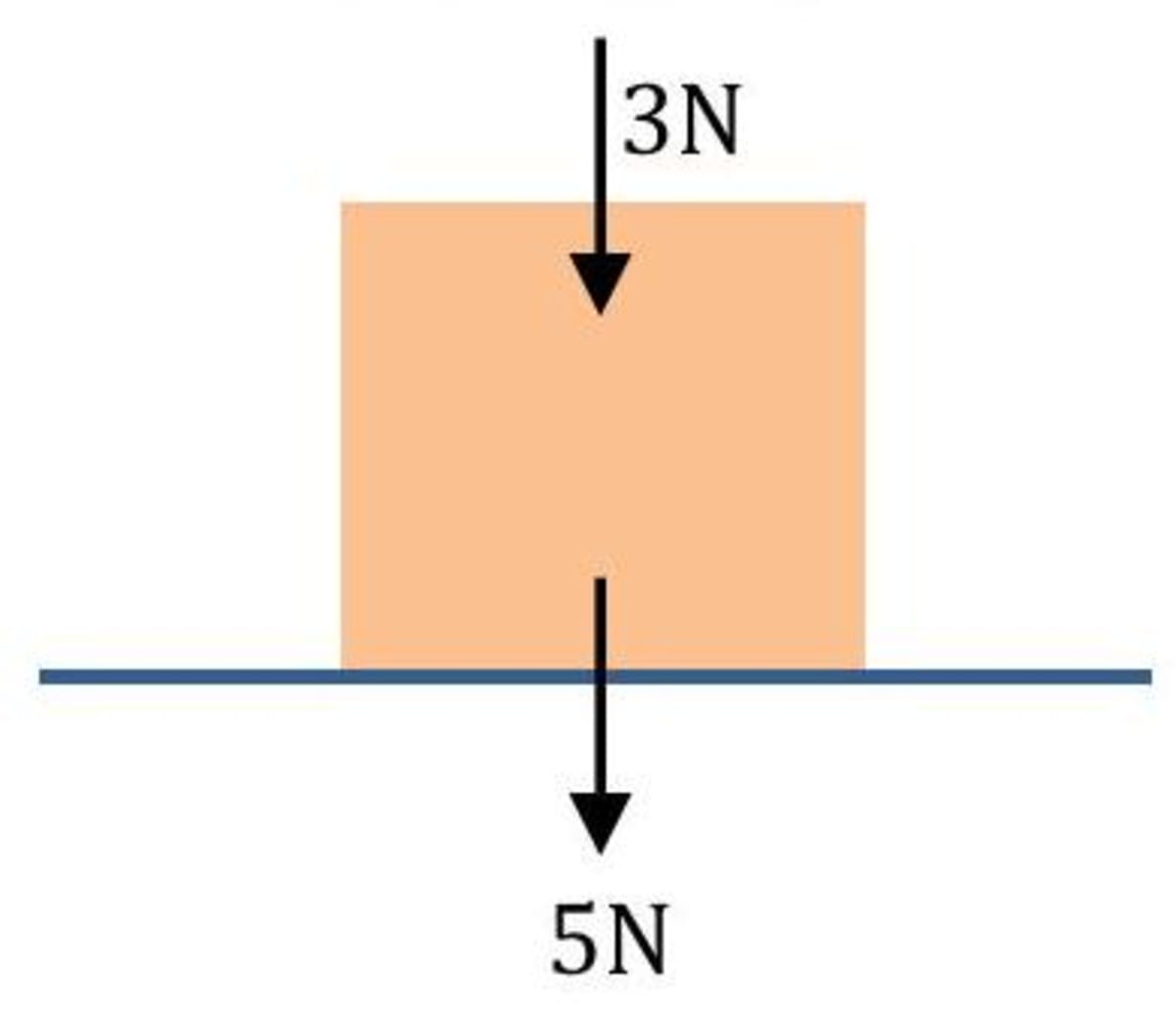
- Three forces A, B and C are acting on a heavy box as shown in figure
Force is twice of while is twice as compare to that of . If force is , then find the resultant force on the box. Solution: Given : and Net force on the block is towards right.
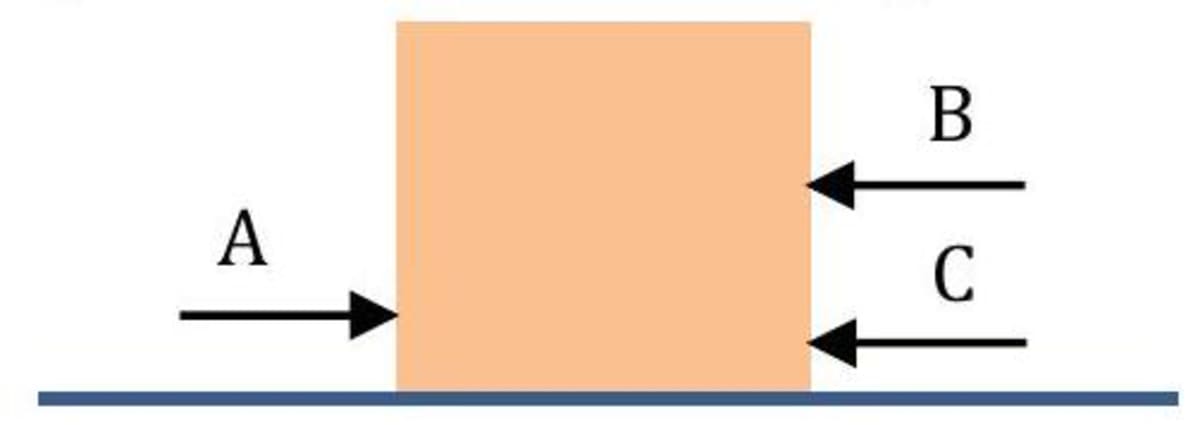
- Three confused sledge dogs are trying to pull a sled across the Alaskan snow. Alutia pulls west with a force of 35 N , Seward also pulls west but with a force of 42 N , and big Kodiak pulls east with a force of 53 N . What is the net force on the sledge?
Solution: Since the forces are in opposite direction. Net force on the sledge is

- If an object exerts a force of 45 N over a surface of dimension , what is the pressure exerted by the liquid? Solution: Given, Force Area Pressure .
- The given figure shows a statue. It exerts a pressure of 340 Pa on the floor. What is the force exerted by the statue if base area of its one foot is ?
Solution: Given- pressure Base area . Weight is a force that statue exerts downward. So, Pressure For two feet of statue, weight is 1.156 N .
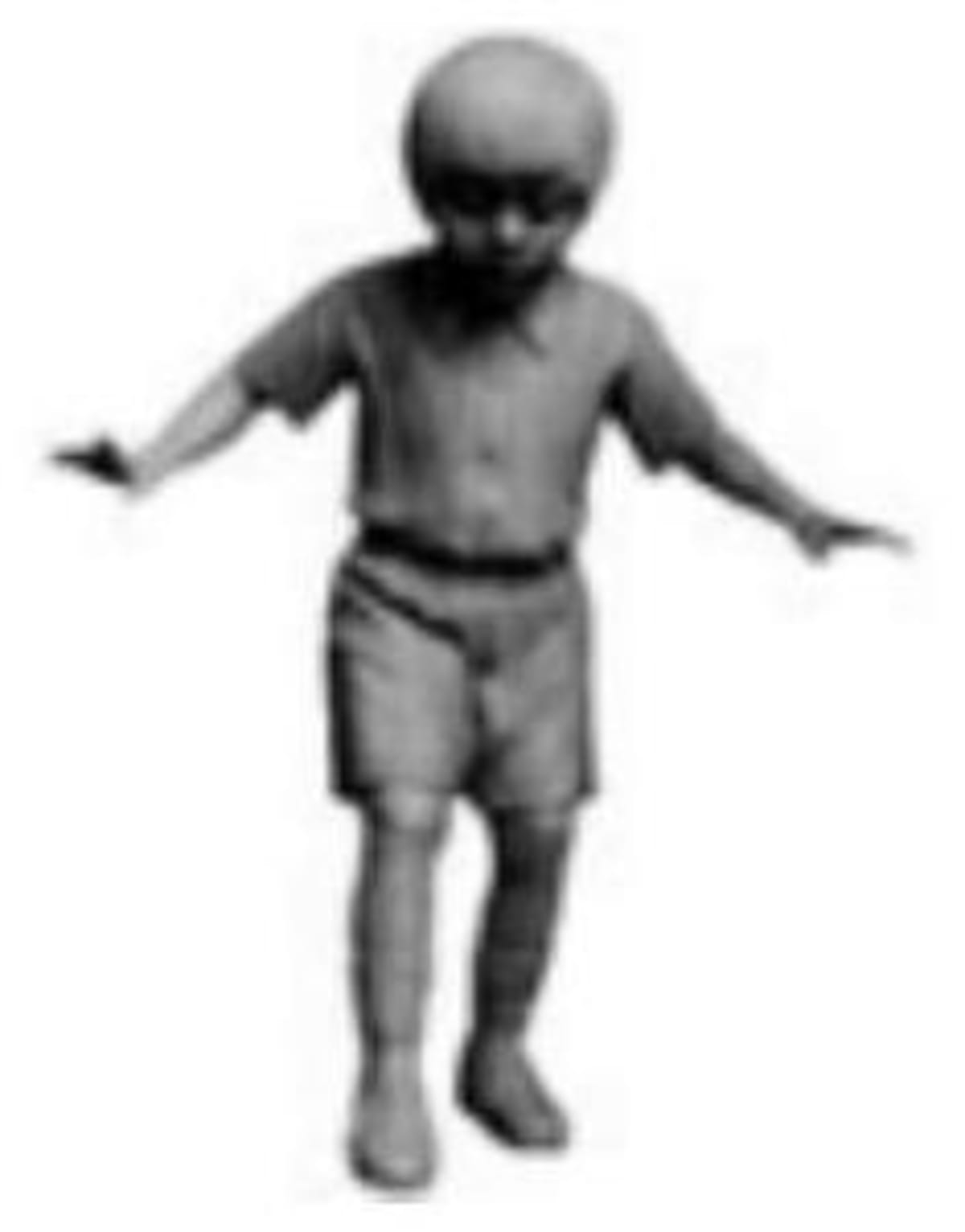
- The elephant weighs 20000 N stands on one foot of area . How much pressure would it exert on the ground? Solution Given : F , . Pressure
- A cube is shown in figure exerts a force of 20 N on ground. Find the ratio of the minimum to maximum pressure it exerts on changing its orientation.
Solution: Given- Force Block dimensions ? To find the maximum pressure, the area should be minimum and vice versa. . .
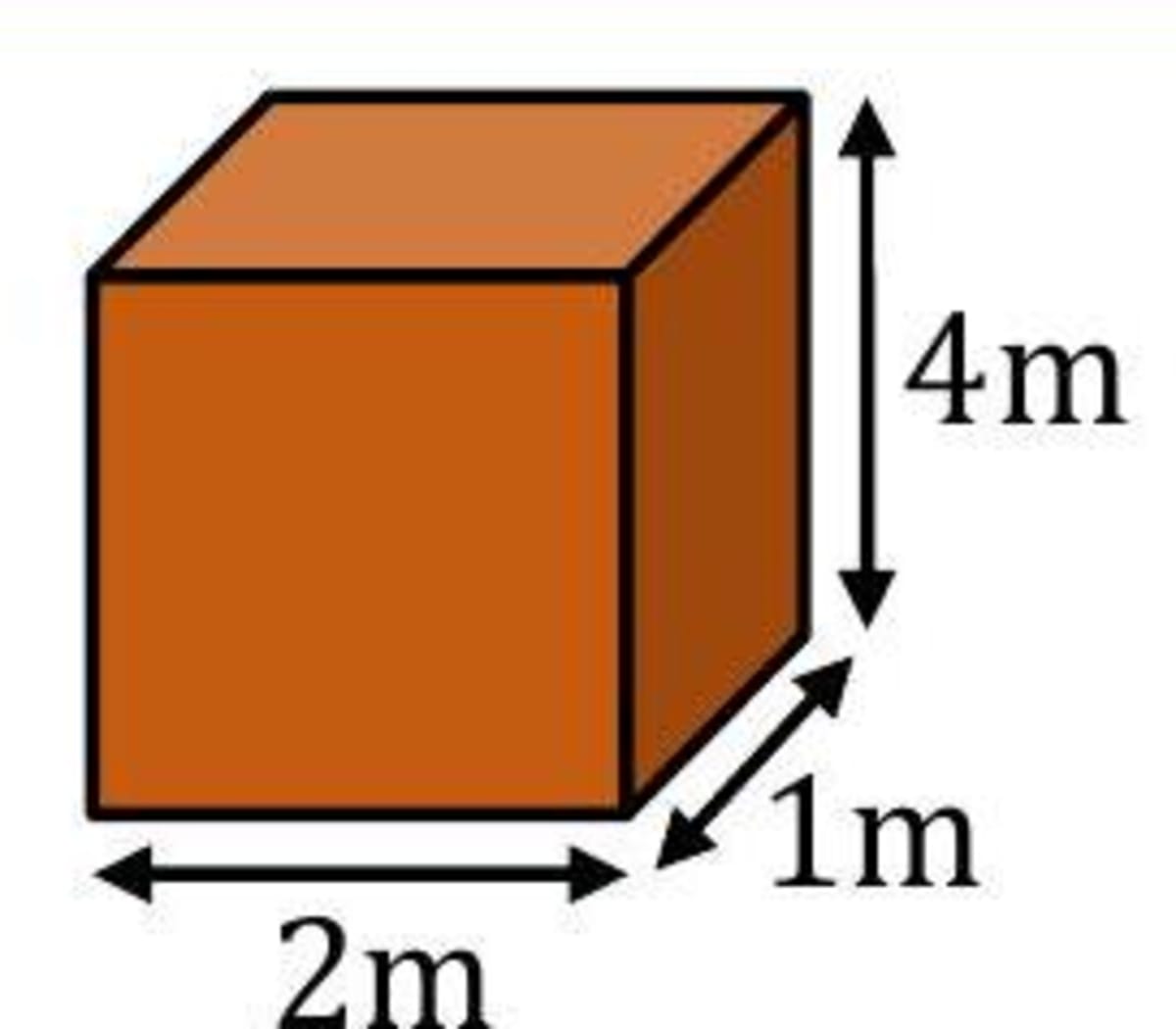
- Calculate the pressure produced by a force of 800 N acting on a rectangular area of length 4 m and width 2 m . Solution: Given: . Area . Pressure .
- A stone exerts a force of 500 N . Calculate the pressure exerted by it, if it makes contact with a surface of area . Solution: Given: Weight of a stone; F = 500 N Area ? Pressure
Related Article:-
Join ALLEN!
(Session 2026 - 27)